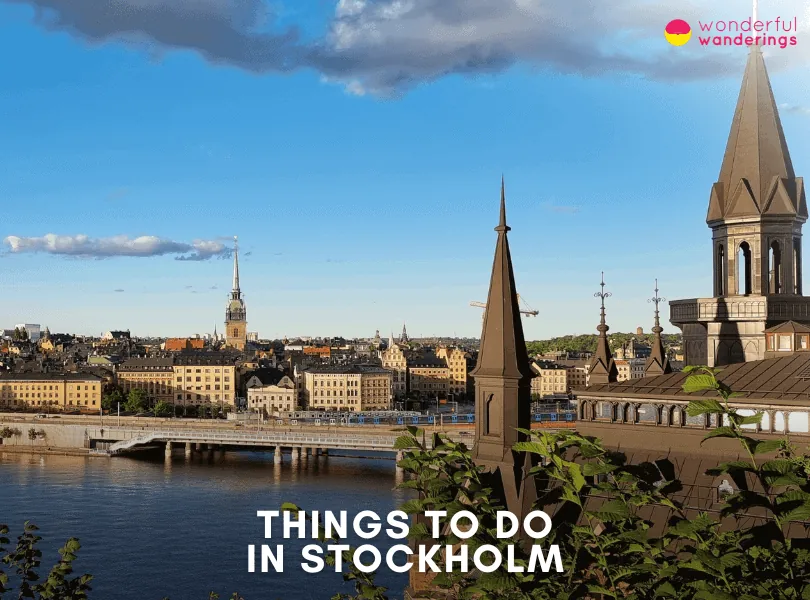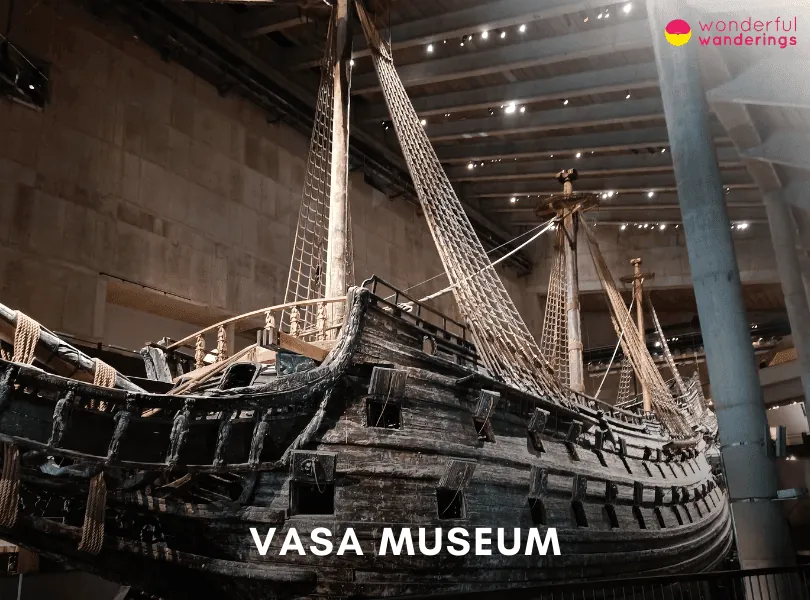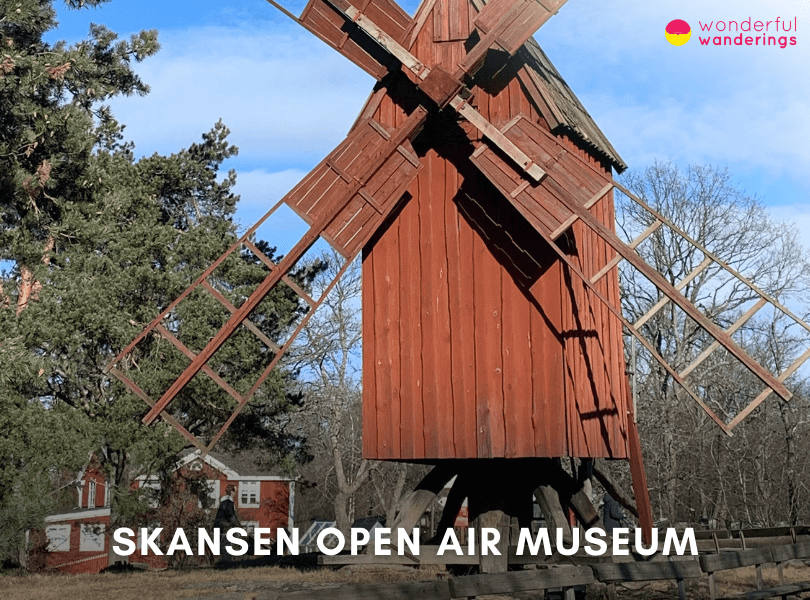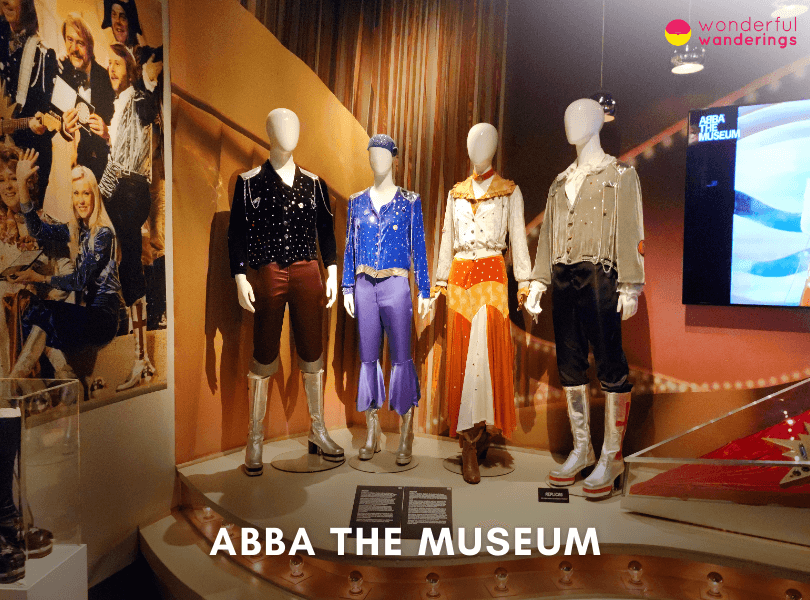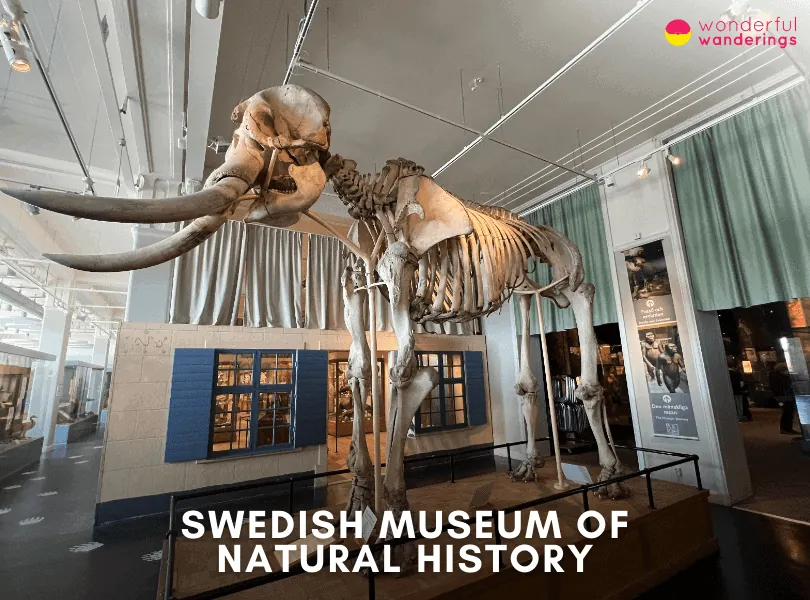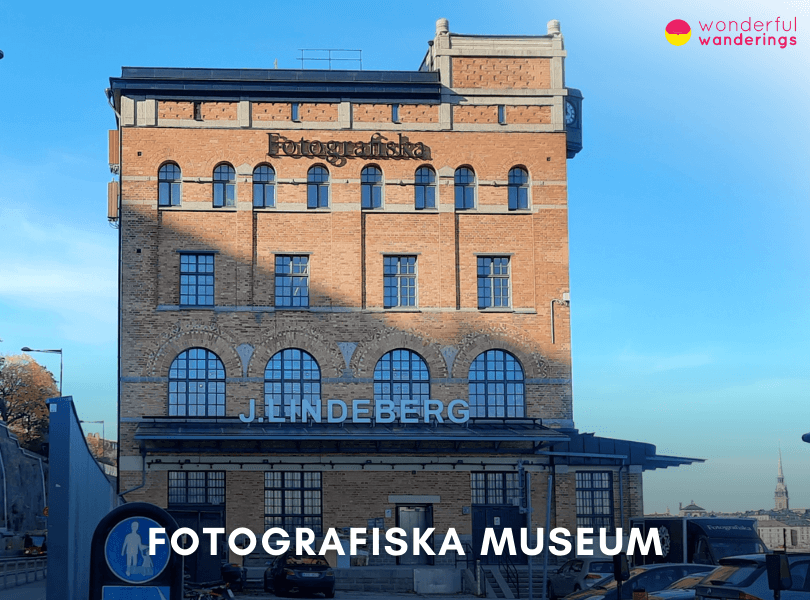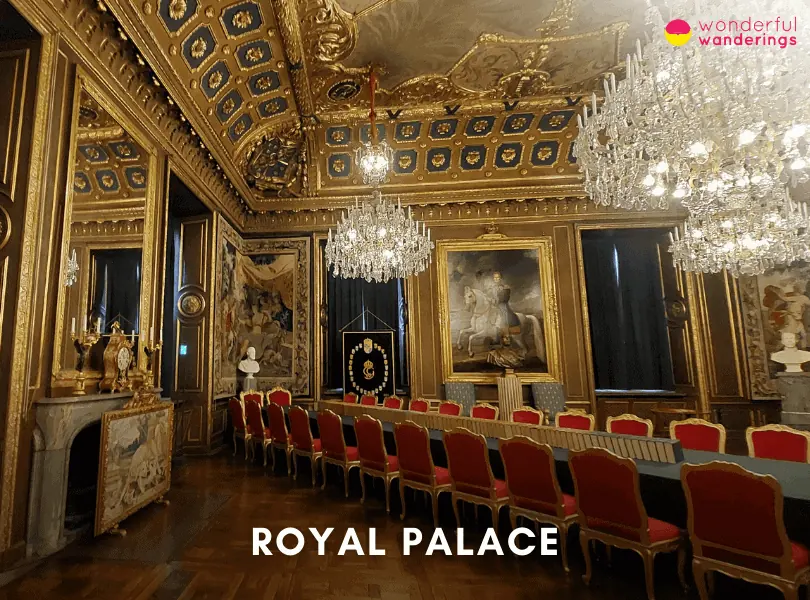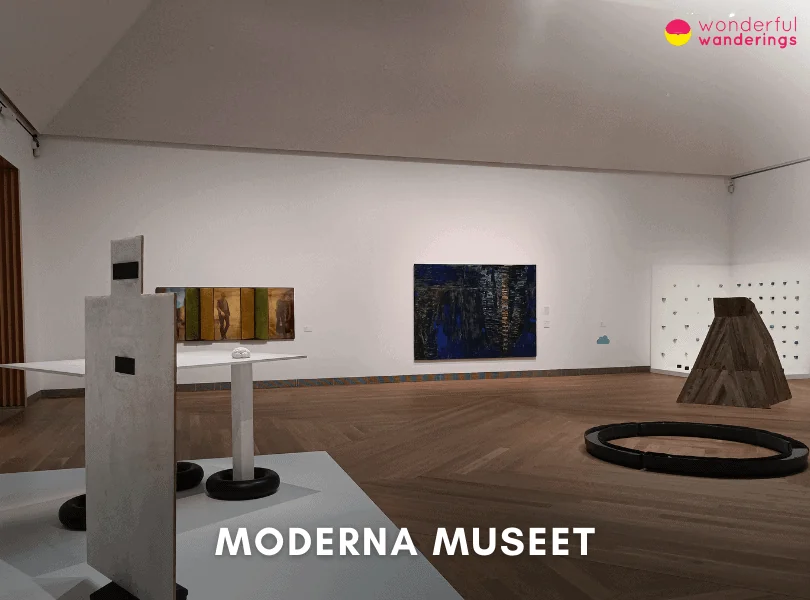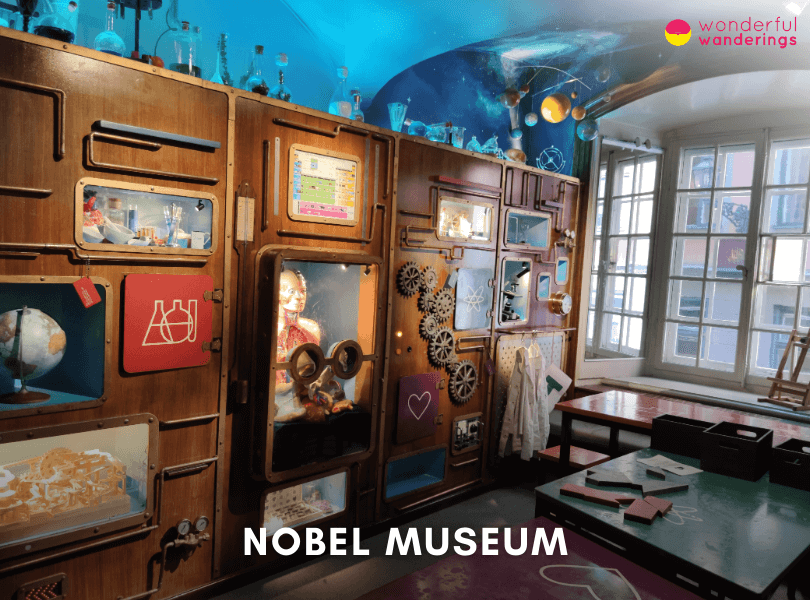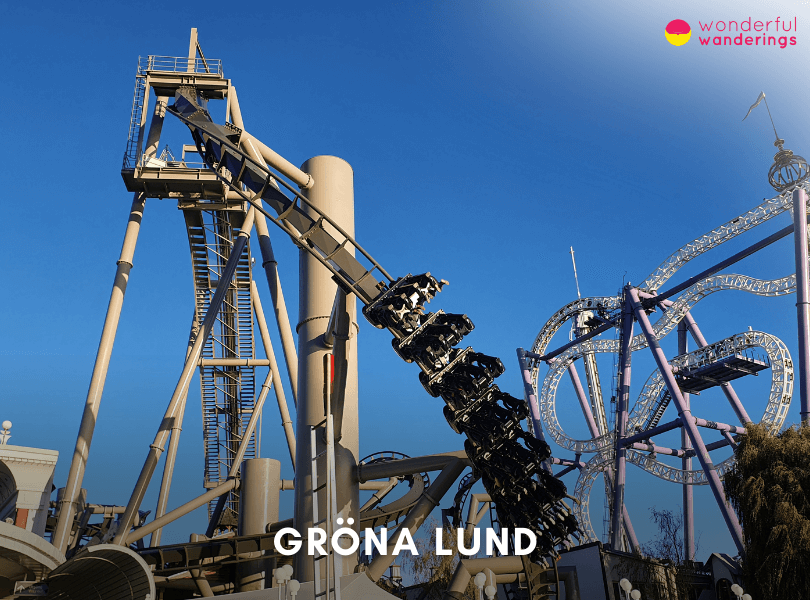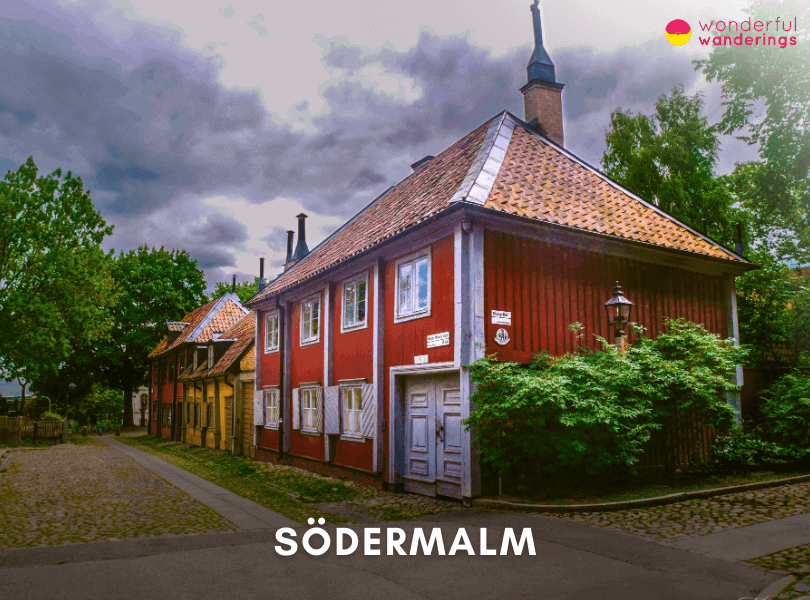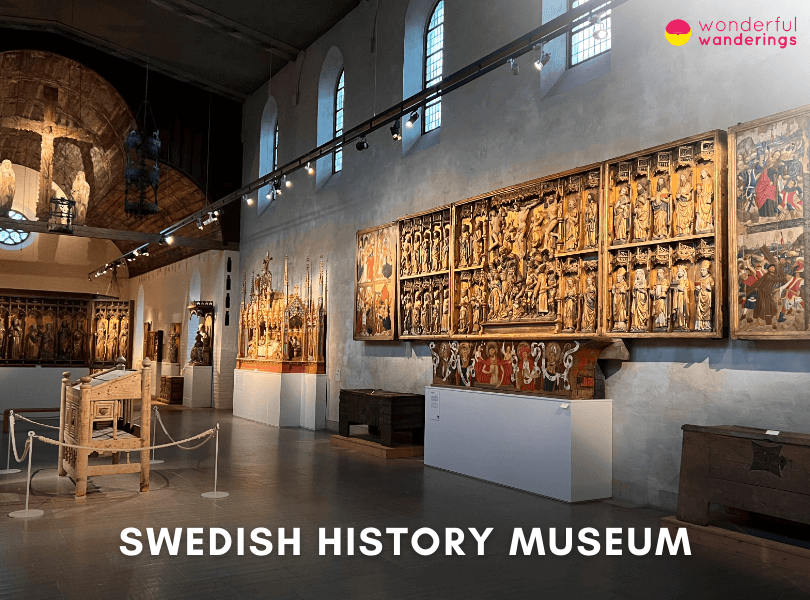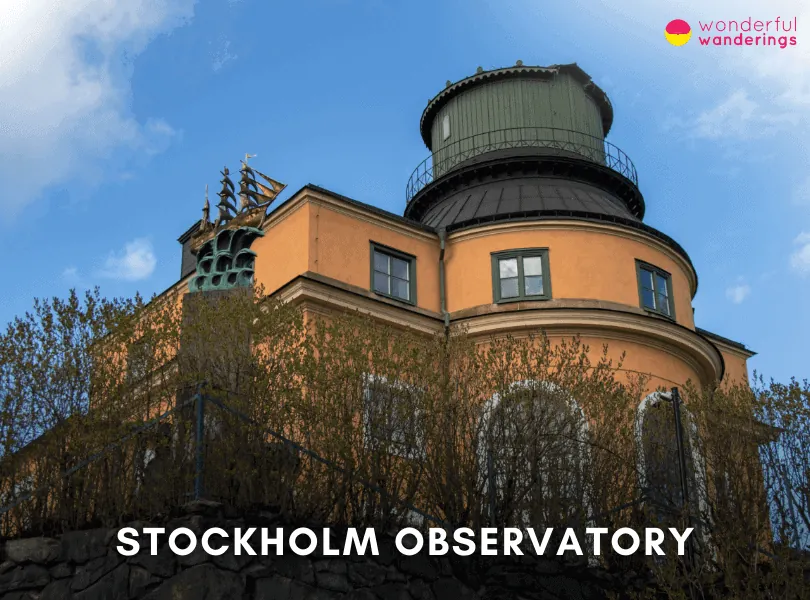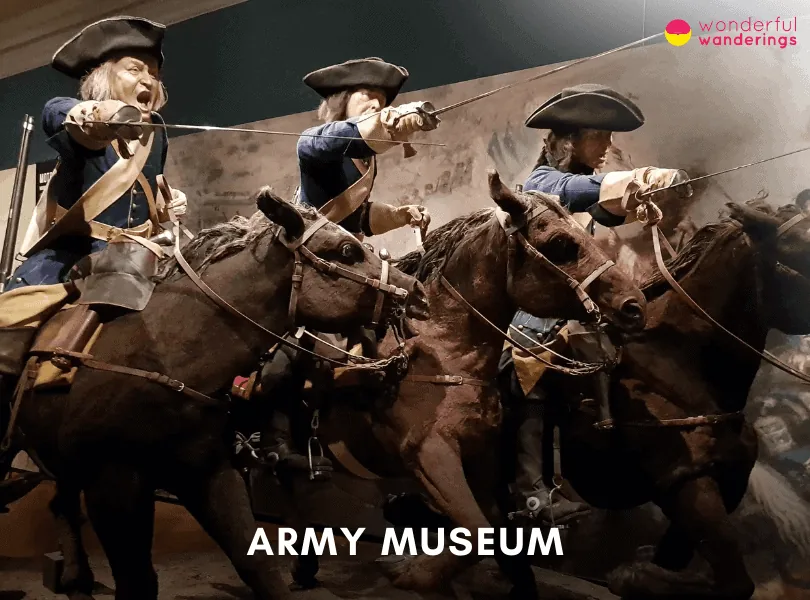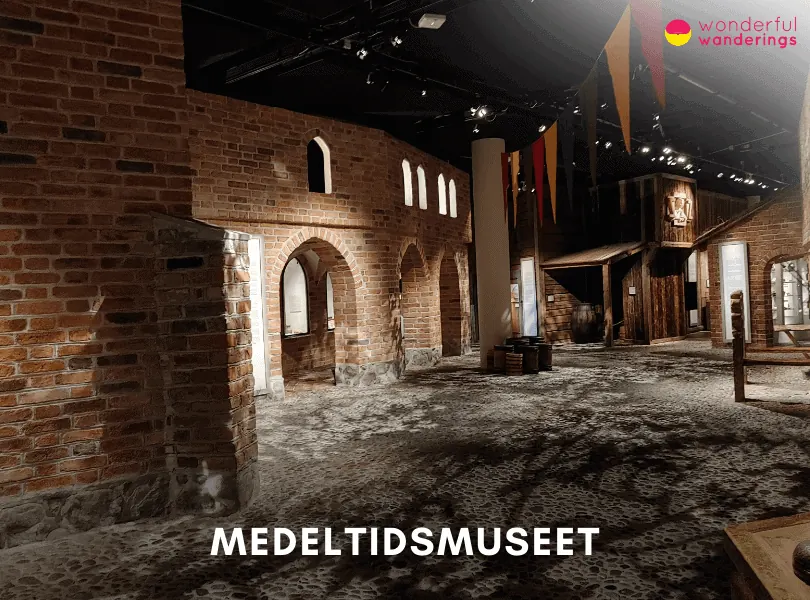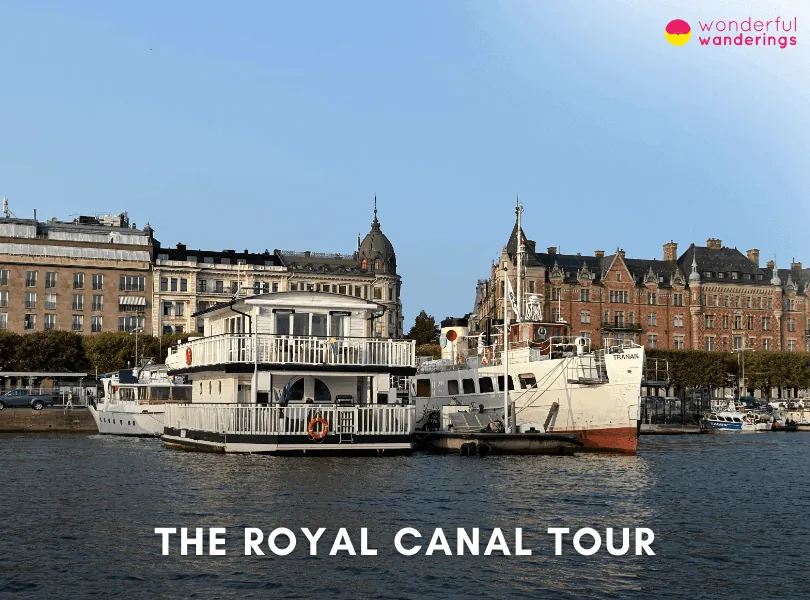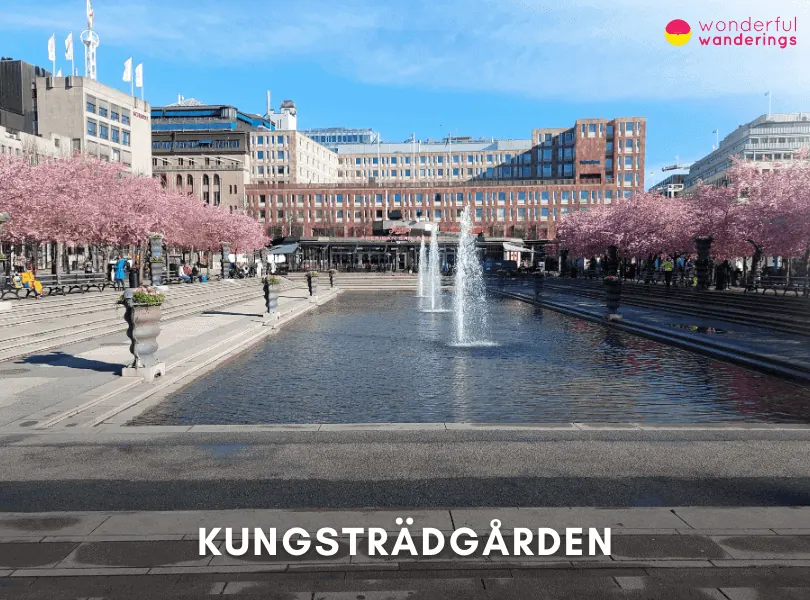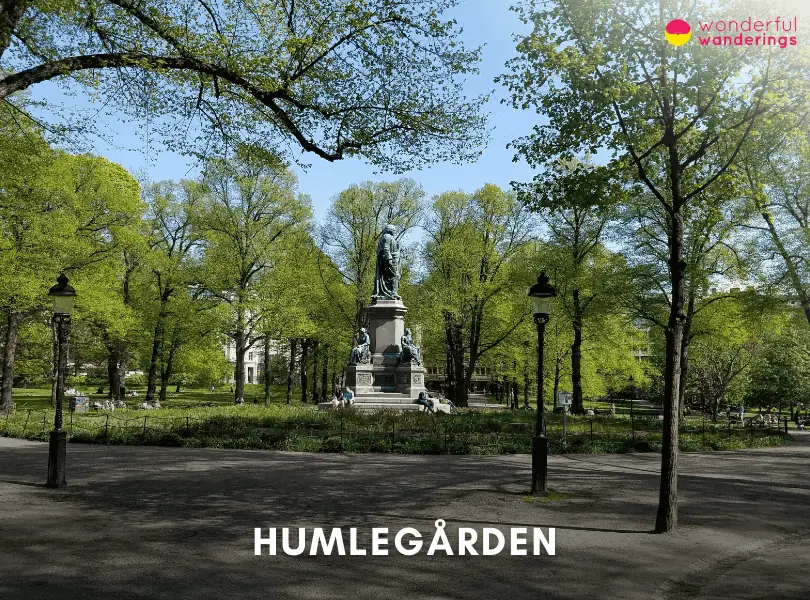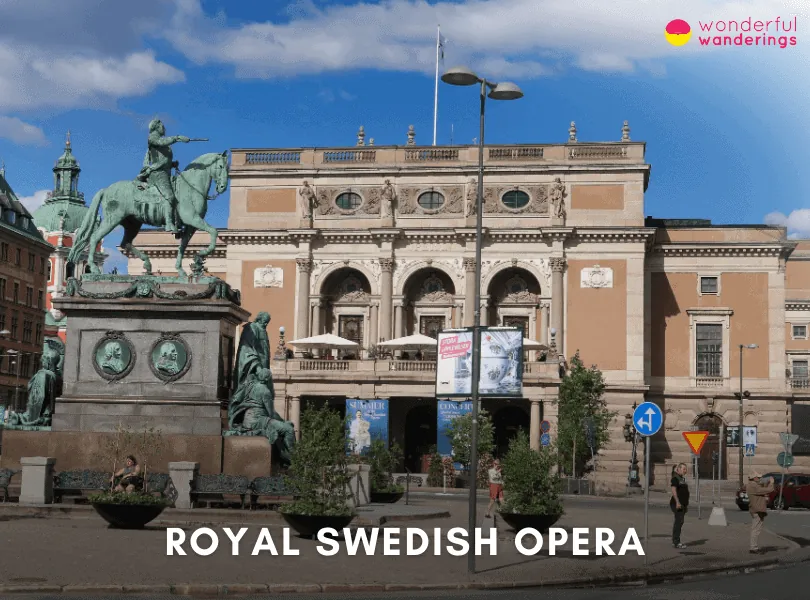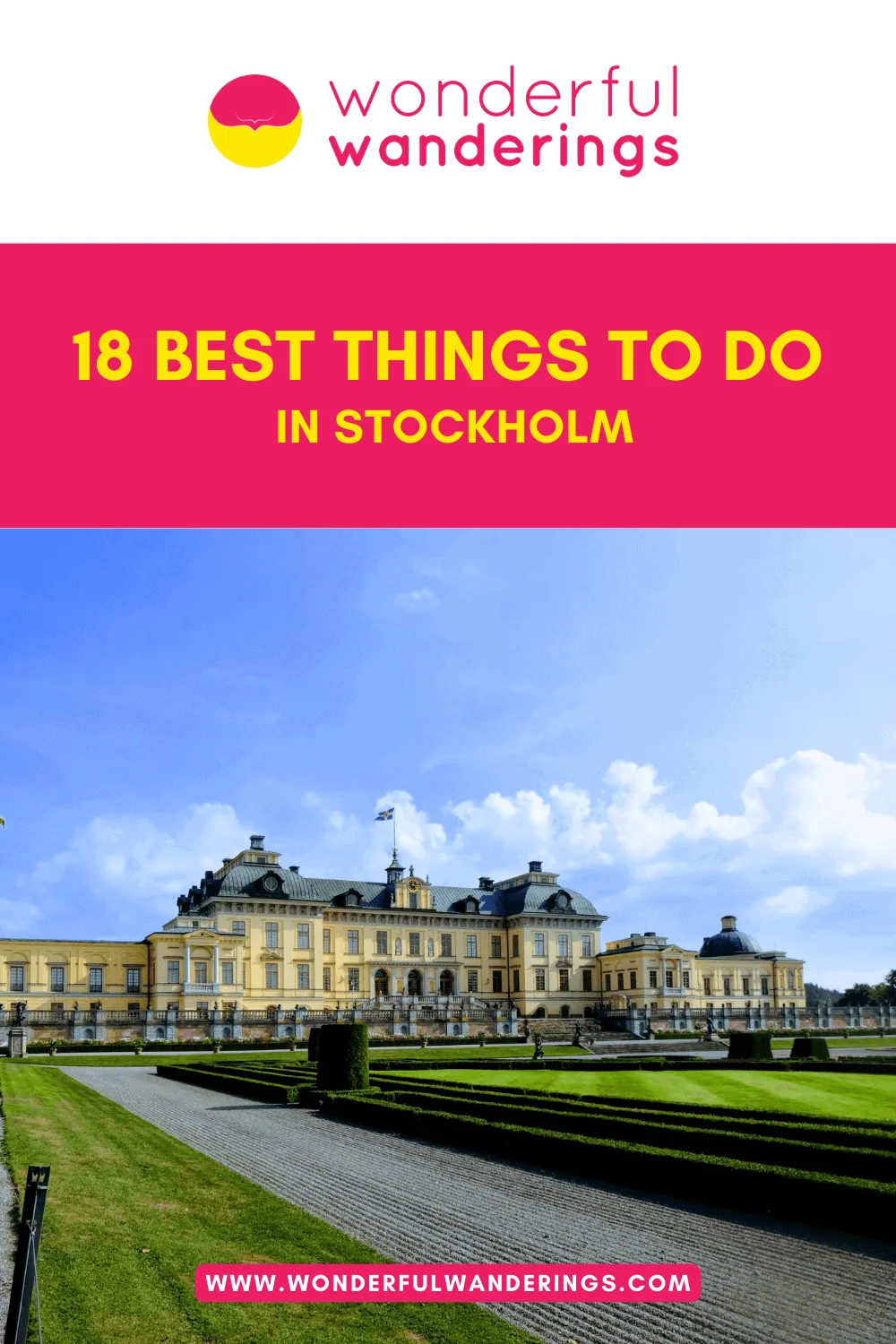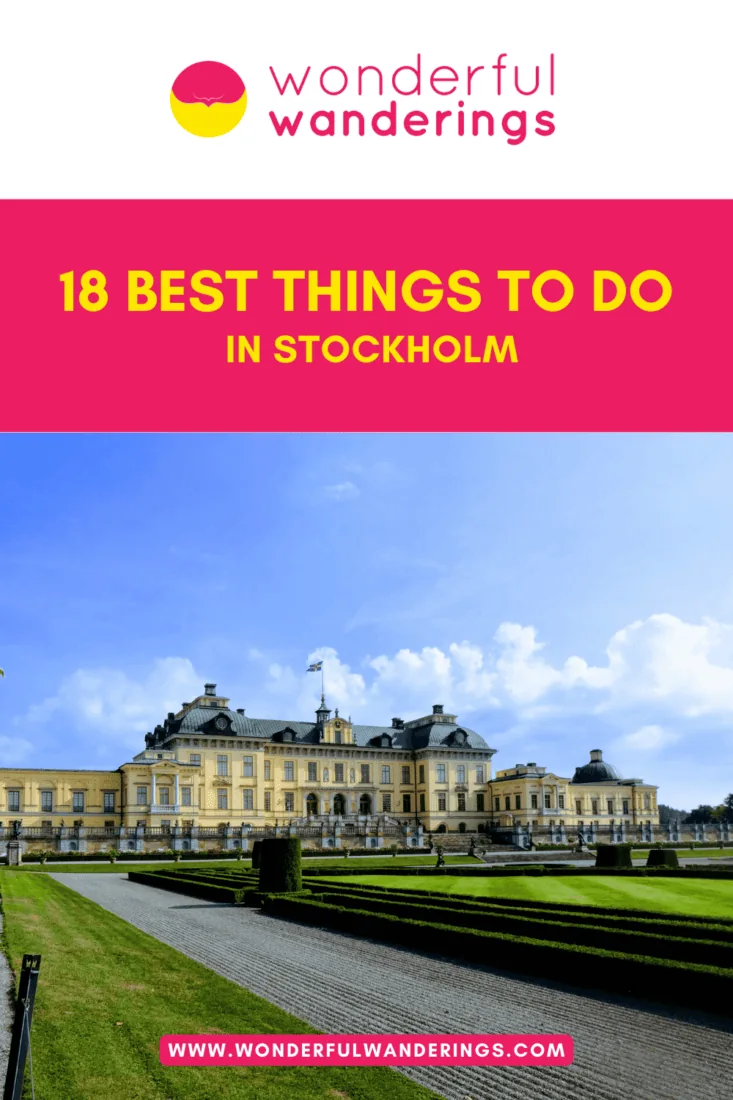Stockholm is Sweden’s capital and largest city, known for its natural setting across 14 islands at the Lake Mälaren and the Baltic Sea. The cityscape mixes medieval alleyways in Gamla Stan with contemporary architecture and abundant green spaces. Stockholm offers visitors a wealth of museums, attractions, culinary experiences and proximity to scenic nature. Top museums include the Vasa Museum, which displays a preserved 17th-century warship. The Skansen Open Air Museum, with over 150 historic Swedish buildings and Fotografiska showcase contemporary photography. The ABBA Museum allows fans to immerse themselves in the band’s illustrious career through interactive exhibits. The Swedish History Museum traces the country’s history from the Stone Age to modern times.
Outdoor attractions range from the Royal Palace and guard ceremony changes to urban parks like Humlegården and Kungsträdgården. The amusement park Gröna Lund provides thrills, while the surrounding Djurgården area houses museums and recreation. The Södermalm district is captivating with boutique shopping and hip culture. Scenic boat tours explore Stockholm’s abundant waterways and archipelago.
Swedish cuisine shines through classics like meatballs, gravlax salmon and cinnamon buns. The city offers creative Nordic fare at restaurants like Lilla Ego and Ekstedt. Cafés provide fika coffee breaks. Stay in design-forward hotels like Ett Hem boutique hotel or classic grandeur at the Grand Hôtel. Stockholm balances extensive city amenities and Scandinavian quality of life. The city is very safe, with lower crime rates than other European capitals. Public transit is efficient and walking-friendly. Stockholm is expensive compared to other European cities. Free museums and parks help offset costs for budget travelers. Visiting for 3-4 days allows enough time to appreciate Stockholm’s history, culture, cuisine and natural beauty without feeling rushed. Proximity to other highlights like Drottningholm Palace expands possibilities for easy day trips.
Listed below are the best things to do in Stockholm.
- Vasa Museum. The Vasa Museum is a famous maritime museum on Djurgården island in central Stockholm, Sweden. Vasa Museum opened in 1990. It receives over 1.5 million visitors per year, making it the most visited museum in Scandinavia. The museum displays the intricately decorated and nearly fully intact 64-gun warship Vasa that sank on her maiden voyage in 1628. Visitors can view the ship from multiple levels, explore exhibits about its history, watch a film about its sinking and recovery, take a guided tour and visit the gift shop. The museum is easily accessible by public transportation including trams, buses, ferries and more. Timed tickets are required for entry and sell for about $18 for adults. Guided tours and audio guides are free with admission.
- Skansen Open Air Museum. The Skansen Open Air Museum located on Djurgården island in Stockholm is the oldest open-air museum in the world. Visitors can explore the traditional town and farmsteads to see recreated scenes of Swedish life through the centuries. Skansen also has a Nordic zoo with bears, wolves, reindeer and other wildlife in natural enclosures. The museum is easily accessible by tram, bus or ferry from central Stockholm. Adult admission is around €17 ($18, £15). Skansen brings Swedish traditions alive through events like Midsummer, Walpurgis Night and Lucia Day celebrations.
- ABBA The Museum. ABBA The Museum is an interactive exhibition in Stockholm dedicated to the iconic Swedish pop group ABBA. Visitors can view costumes, instruments, awards and memorabilia in themed rooms. The 5th Member experience allows fans to perform on stage alongside ABBA holograms. Additional activities include singing karaoke hits in recording booths, mixing music and trying on outfits virtually. The museum is easily reached by tram or bus from central Stockholm. For adults, online tickets start around €20 ($22, £18). Payment is by card only, as cash is not accepted.
- Swedish Museum of Natural History. The Swedish Museum of Natural History is located in Stockholm next to Stockholm University. The Swedish museum was founded in 1819, it houses over 10 million animal, plant, fungus, fossil and mineral specimens in its collections. Permanent exhibitions showcase Swedish habitats like forests and wetlands, towering dinosaur skeletons, marine reptile fossils and more. The IMAX dome cinema shows nature documentaries. The museum is easily reached by metro or commuter train to Universitetet station, just a 5-minute walk away.. Kids under 19 get free admission. Guided tours are available for groups. Payment onsite is by credit card, mobile Swish or Swedish debit cards.
- Fotografiska Museum. Fotografiska is a contemporary photography museum located in a historic 1906 customs house building on the Södermalm waterfront in Stockholm. Opened in 2010, it is one of the world’s largest venues for exhibiting photography. Visitors can reach Fotografiska by metro to Slussen station, then walk 10 minutes along the harbor.
- Royal Palace. The Royal Palace is the official residence of the Swedish royal family, located on Stadsholmen Island in Gamla Stan, Stockholm’s old town. Built in the 18th century in Baroque style on the site of the previous Tre Kronor castle that burned down, the palace has over 600 rooms. Visitors can tour parts of the palace year-round including the Royal Apartments, Tre Kronor Museum and cellar Treasury displaying Sweden’s crown jewels. Other highlights are the Changing of the Guard ceremony and Sunday services in the Royal Chapel.
- Moderna Museet. Moderna Museet is Sweden’s national museum for modern and contemporary art, located on the island of Skeppsholmen in central Stockholm. The collection includes important works by Picasso, Dalí, Matisse, Warhol and other 20th and 21st century artists. Exhibitions range from solo retrospectives to thematic shows on different movements and mediums. Highlights for visitors are special exhibitions, film screenings, lectures, guided tours in English and the gift shop. Admission to the permanent collection is free.
- Nobel Museum. The Nobel Museum in Stockholm opened in 2001 to commemorate the 100th anniversary of the Nobel Prize. The museum is located in the old town and it showcases the achievements of Nobel laureates in physics, chemistry, medicine, literature, peace and economics. Exhibitions feature original artifacts like Marie Curie’s notebooks and Martin Luther King Jr.’s speech notes, along with Nobel medal replicas. Films, interactive displays and tours educate visitors about the groundbreaking discoveries enabled by Nobel Prize winners.
- Gröna Lund. Gröna Lund is an amusement park located on Djurgården island in Stockholm, Sweden. Opened in 1883, it is one of the oldest amusement parks in the world. Gröna Lund has over 30 rides and attractions, including roller coasters like Jetline, spinning coasters, a free fall tower, carousels, fun houses and more. Popular concerts are hosted on the main outdoor stage during summer. Unlimited ride passes, family packages and concert tickets are also available
- Södermalm. Södermalm is one of the central islands comprising Stockholm’s inner city, located south of the downtown area. The main street, Götgatan is lined with shops, cafés, bars and nightlife. Other popular areas include the chic SoFo district, Mariatorget square and parks offering city views. Highlights include the photography museum Fotografiska, medieval history museum, concert venues and proximity to attractions like the ABBA Museum. Södermalm is easily reached by metro, commuter train or Djurgården ferry.
1. Vasa Museum
The Vasa Museum is a maritime museum located on Galärvarvsvägen 14 in Stockholm, Sweden. It is situated on the island of Djurgården, a popular recreation area in central Stockholm that houses several museums and attractions. Djurgården island is located just east of Stockholm’s Old Town (Gamla Stan) and can be easily accessed by public transportation, including trams, buses and ferries. The museum opened in 1990 and is the most visited museum in Scandinavia, welcoming over 1.5 million visitors annually.
There are many things a visitor can do at the Vasa Museum during their visit. Visitors can view the decorated and nearly fully intact warship Vasa, the museum’s main attraction, from multiple levels and angles. Explore the permanent and temporary exhibits surrounding the ship to learn about its history, recovery and life in the 17th century. Watch a film in the museum’s theater showcasing how the Vasa sank and was later salvaged. Take an audio or guided tour for more in-depth information about the ship and its artifacts. Visitors can visit the museum shop stocked with Vasa-themed gifts and souvenirs.
The Vasa Museum is easily accessible by public transportation. Visitors can take tram number 7 from central Stockholm to the Nordiska Museet/Vasamuseet stop. This tram departs regularly from downtown locations such as Kungsträdgården. Ride the Djurgården ferry from Slussen to Djurgårdsfärjan, only a short walk from the museum entrance. Ferries to Djurgården run frequently. Take bus number 67 from Karlaplan to the Vasamuseet bus stop. Several other buses stop nearby as well. Walk or bike from central Stockholm over the bridge to Djurgården island – the museum is about a 30-minute walk from downtown. Drive to the museum and park in the nearby parking garage for a fee. Garage access is from Djurgårdsslätten.
The Vasa Museum offers timed ticketing with specific entry windows to manage capacity. It is highly recommended to pre-purchase tickets online or onsite to guarantee entry, with prices being SEK 180 (€17, $18, £15) for adults ages 19 and over, SEK 129 (€12, $13, £11) for students with valid identification, free admission for youth ages 6 to 18 and also free for children under 6. Tickets bought at the door are slightly cheaper for adults at SEK 160 (€15, $16, £14). Combo tickets for the Vasa Museum and the sister Museum of Wrecks are also available. Payment is only by debit/credit card, as cash is not accepted. Both digital and printed tickets work for entry. Guided tours and audio guides are included free of charge with all tickets purchased.
2. Skansen Open Air Museum
Skansen Open Air Museum is the world’s oldest open-air museum, founded in 1891 by Artur Hazelius. It is located on Djurgården Island at Djurgårdsslätten 49-51, 115 21 Stockholm, Sweden. The museum spans 75 acres and contains over 150 historic buildings transported from locations around Sweden, including farmsteads, homes, shops, schools and churches. Skansen also has a Nordic zoo with animals like bears, wolves, reindeer, moose and lynx in natural enclosures. The museum brings Swedish traditions alive through celebrations of events like Midsummer, Walpurgis Night and Lucia Day.
Visitors can explore the traditional Swedish town and farmsteads to see recreated scenes of how Swedes lived in centuries past. Visitors can also observe farm animals, shop in recreated stores and see folk dance performances. The Nordic zoo section allows visitors to view bears, wolves, lynx, reindeer and other wildlife in natural enclosures. There is also a children’s zoo where families can interact with farm animals. Skansen has cafes, restaurants and shops spread throughout the grounds. Temporary exhibits related to Swedish cultural history are often on display as well.
Public transportation is the easiest way to get to the Skansen Open Air Museum. Visitors can take tram number 7 from downtown Stockholm to the Waldemarsudde/Skansen stop. Tram number 7 departs frequently from locations like Kungsträdgården and Sergels Torg. Visitors can also take bus number 69 from Norrmalmstorg/Hamngatan to the Skansen stop. An alternate option is to take a ferry from Slussen to Djurgården, then walk 10-15 minutes to Skansen’s entrance. The ferry ride provides scenic views of Stockholm’s harbor and islands.
Admission tickets to Skansen Open Air Museum for adult visitors cost SEK 180 (€17, $18, £15). Children ages 3-15 can enter for SEK 53 (€5, $6, £5) online. Children under age 3 get free admission. Family packages and annual passes are also available. Tickets grant access to the entire open-air museum and Nordic Zoo. An extra fee applies for the children’s zoo and some special exhibits. Visitors who purchase paper tickets on-site pay SEK 20 (€2, $2, £2) more per ticket. Credit cards or Swish mobile payments are accepted for ticket purchases at Skansen.
3. ABBA The Museum
ABBA The Museum is an interactive exhibition in Stockholm, Sweden, dedicated to the iconic Swedish pop group ABBA. It is located in Djurgårdsvägen 68 115 21 Stockholm, Sweden. Djurgården sits in central Stockholm, home to many of the city’s top museums and attractions. The Museum is next to the Gröna Lund amusement park and the Liljevalchs art gallery, with the Vasa Museum and Skansen also nearby. Highlights include the band’s Polar Music recording studio with Benny’s piano, a replica of the Eurovision stage where they won in 1974 and the helicopter featured on their ‘Arrival’ album cover.
Visitors to ABBA The Museum can immerse themselves in the band’s illustrious career through various interactive exhibits and displays. Guests can view the band’s original costumes, instruments, awards, personal items and memorabilia up close in themed rooms. Singing booths allow visitors to belt out ABBA karaoke hits like they are inside the group’s iconic Polar Studios. In the high-tech 5th Member experience, fans can perform on stage and dance alongside life-size holograms of Agnetha, Björn, Benny and Anni-Frid. Additional activities include mixing music in a studio, playing instruments, taking photos in replica sets modeled after album cover locations and virtually trying on ABBA’s signature cat and star outfits. An audio guide narrated by the members shares inside stories as visitors explore.
The easiest way to reach ABBA The Museum is by public transportation. Visitors can take tram number 7 from downtown Stockholm and disembark at the Liljevalchs/Gröna Lund stop directly adjacent to the museum entrance. The tram ride takes about 15 minutes from central Stockholm. Alternatively, bus number 44 also stops near ABBA The Museum at Djurgårdsbron, with the one-way ride taking around 20 minutes from the city center. Ferry services to nearby piers on Djurgården Island are also available seasonally, allowing access from neighborhoods like Gamla Stan.
Admission tickets to ABBA The Museum for adult visitors cost SEK 283 (€27, $28, £23). Children ages 7-15 can enter for SEK 106 (€10, $11, £9). Kids under age 7 get free admission when accompanied by an adult. Booking online in advance provides discounted pricing, with adult tickets starting at SEK 221 (€21, $22, £18). Add-ons like audio guides are available for an extra fee. Packages and combo deals bundling admission with other attractions can also be booked. Accepted payment methods include credit cards, Swish mobile payments and foreign currencies. Guided tours are offered on certain days for groups at an additional cost.
4. Swedish Museum of Natural History
The Swedish Museum of Natural History is a museum in Stockholm dedicated to natural history, biodiversity and sustainability. It is located at Frescativägen 40, 114 18 Stockholm, Sweden. It is situated next to the main campus of Stockholm University in the Frescati area. The museum was founded in 1819, its collections comprise over 10 million specimens of animals, plants, fungi, fossils and minerals. The museum has several permanent exhibitions showcasing Swedish habitats like forests, wetlands and the Baltic Sea.
Visitors to the Swedish Museum of Natural History can explore several permanent exhibitions showcasing natural history, biodiversity and sustainability topics. In the Fossils and Evolution halls, visitors can marvel at towering dinosaur skeletons from North America and Africa, fossil marine reptiles, early tetrapods and more. Special exhibitions highlight additional natural history themes, from the story of feathers told through birds of paradise specimens to the issue of plastic pollution in the world’s oceans. The in-house IMAX dome cinema shows nature and science documentaries on climate change, space, oceans and wildlife.
The easiest way to reach the Swedish Museum of Natural History is by taking the metro or commuter trains to Universitetet station. From there, the museum is around a 5 minute walk. Visitors can also take buses 40, 50, 540 or 676 and disembark at the Naturhistoriska Riksmuseet stop right outside the museum. Additionally, visitors can take the metro to Tekniska Högskolan station and walk 10-15 minutes to the museum. The closest stop for central Stockholm metro lines is T-Centralen, with Universitetet just 5 stops away on the red line.
General admission tickets to the Swedish Museum of Natural History for adult visitors cost SEK 140 ($13, £11). Reduced tickets for students and seniors over 65 cost SEK 95 (€9, $9, £7).. Children and teens under age 19 receive free admission when accompanied by an adult. Special exhibition halls may incur an additional entrance fee. Annual passes are also available for purchase. Payment methods accepted on-site include major credit cards, Swish mobile payments or Swedish debit cards. Guided tours and private tours for groups can be booked for an additional cost. Visitors should note that most ticket sales at the museum are now cashless.
5. Fotografiska Museum
Fotografiska Museum is a contemporary photography museum located in Stadsgårdshamnen 22, 116 45 Stockholm, Sweden. Opened in 2010, it is one of the world’s largest venues for exhibiting photography. The museum is housed in a historic customs house building from 1906 on the Södermalm waterfront. Across its multiple floors, Fotografiska presents four large-scale exhibitions and around 20 smaller exhibitions yearly, showcasing a diverse range of photographic styles, techniques and artists worldwide.
Visitors can explore a wide range of contemporary photography exhibitions that change multiple times per year. Exhibitions cover various styles from portrait and documentary to conceptual and fashion photography. Visitors can browse the galleries at their own pace, admiring the featured works. Fotografiska contains workshop spaces, event halls, a restaurant with harbor views, a bistro, café and museum shop. Visitors can refuel and relax in the dining areas and terraces. The shop sells photography books, prints, gifts and souvenirs.
The easiest way to reach Fotografiska Museum is by public transportation. Visitors can take the metro to Slussen station, then walk around 800 meters east along the harbor to the museum. The walk takes about 10 minutes. Alternatively, visitors can take a bus like #3, #53, #55, #59, #76 or #96 and disembark at the Slussen bus terminal. From there, it is a short 5-minute walk to the museum. The museum can also be accessed by ferry, with hop-on-hop-off boat services stopping at Fotografiska during summer. Additionally, taxis and rideshares can conveniently drop visitors off directly at the entrance of Fotografiska on Stadsgårdshamnen street.
Admission ticket prices to Fotografiska Museum vary based on time and day. Adult tickets start at around SEK 158 (€15, $16, £13) if purchased online in advance. Upon arrival, adult tickets range from SEK 158 to SEK 242 (€15-23, $16-25, £13-20) depending on the time. Children under 12 enter for free when accompanied by an adult. Tickets can be purchased at the museum entrance or online before visiting. Visitors should note that Fotografiska uses dynamic pricing, so advanced online tickets provide the lowest rates.
6. Royal Palace
The Royal Palace in Stockholm is the official residence of the Swedish royal family. Located on Slottsbacken 1, 111 30 Stockholm, Sweden. Stadsholmen Island in Gamla Stan, the old town area of Stockholm, the palace was built in the 18th century and has over 600 rooms. It replaced the previous medieval Tre Kronor castle, which was destroyed by fire in 1697. The Baroque-style palace was designed by court architect Nicodemus Tessin the Younger and took over 50 years to complete, with construction starting in 1697.
Visitors can tour parts of the Royal Palace year-round through guided tours. The tours allow you to explore the Royal Apartments with their staterooms, the Tre Kronor Museum depicting the palace’s medieval history and the cellar Treasury displaying Sweden’s crown jewels. Guides provide insight into the rooms and their royal history. Visitors can also watch the Changing of the Guard ceremony in the outer courtyard or attend Sunday services in the Royal Chapel. The palace gift shop sells souvenirs and the cafe offers light meals. Additional areas are open during summer, like Gustav III’s Museum of Antiquities. The palace also hosts temporary exhibitions focused on royal history.
The easiest way to reach the Royal Palace is by public transportation. Visitors can take the metro to the Gamla Stan station, only a 5-minute walk from the palace. Buses 1, 2, 59, 65 and 69 all stop nearby at Slottsbacken. Visitors can also arrive via ferry, with routes that dock at Gamla Stan quay. The ferry provides views of Stockholm’s old town and the palace itself. Visitors can take a taxi, rideshare or private transfer to the main entrance of the Royal Palace on Slottsbacken Street. There is very limited parking, so public transportation is recommended. Guided bus tours of Stockholm often include a stop at the palace.
Admission to the Royal Palace for adult visitors is SEK 190 (€18, $19, £15). Online pre-booking provides a discounted rate of SEK 179 (€17, $18, £14). Students and seniors over 65 pay SEK 137 (€13, $14, £11). Children under 18 get free admission when accompanied by an adult. Guided tours cost an additional SEK 95 (€9, $10, £8) per person. Family tickets, annual passes and special packages like a combined Royal Palace & Royal Armoury ticket are also available. Major credit cards are accepted, but not cash.
7. Moderna Museet
Moderna Museet is one of Sweden’s national museums for modern and contemporary art. Located on Exercisplan 4, 111 49 Stockholm. Skeppsholmen is one of the islands that form part of Stockholm’s inner city archipelago, connected to the mainland neighborhood of Östermalm and the old town of Gamla Stan via bridge the island of The museum’s collection includes important works by Pablo Picasso, Salvador Dalí, Henri Matisse, Andy Warhol and many other seminal 20th and 21st century artists. Moderna Museet aims to collect, preserve and exhibit modern and contemporary art and provide education programs to engage the public. The current building, designed by Spanish architect Rafael Moneo, opened in 1998. Exhibitions at Moderna Museet range from retrospectives of individual artists to thematic shows exploring different movements and mediums.
Visitors to Moderna Museet can explore the museum’s modern and contemporary art collections across painting, sculpture, photography, film, video, installation and performance. The collection includes seminal works by artists like Picasso, Dalí, Matisse and Warhol, alongside Scandinavian and international contemporary artists. Visitors can take in special exhibitions that change several times a year, ranging from solo retrospectives to thematic group shows. The museum also commissions site-specific works and hosts performances and film screenings. Visitors can also attend film screenings, performance art, lectures and other public programs. Guided tours in English provide insight into the collection and special exhibitions. There is a children’s workshop for hands-on art activities. The museum has an excellent gift shop where visitors can browse art books, prints, jewelry and design objects.
Moderna Museet is easy to reach by public transportation or foot if you are already exploring central Stockholm. The closest metro stop is Kungsträdgården on the Blue Line. It is about a 15-minute walk over the bridge from Strömbron dock to reach Skeppsholmen Island and Moderna Museet. The museum is accessible by car or taxi as well, with metered parking available on Skeppsholmen. Another scenic option is to take the Djurgården ferry from Slussen and disembark at Skeppsholmen to reach the museum on foot. Moderna Museet can be reached from most hotels or neighborhoods within a 30-minute metro, bus or walking journey.
Admission to Moderna Museet’s permanent collection featuring modern and contemporary art is free for all visitors. This allows anyone to enjoy works by artists like Picasso, Dalí, Matisse and Warhol at no cost. Special exhibitions that change throughout the year have an admission fee for adults, typically around SEK 148 (€14, $15, £12). However, children and those under 18 can enter special exhibitions for free. The museum also offers free admission during certain hours on Fridays. Guided tours in English typically cost SEK 53 (€5, $5, £4) per person in addition to special exhibition ticket prices.
8. Nobel Museum
The Nobel Museum is devoted to circulating information on the Nobel Prize and its founder Alfred Nobel. Located in Stortorget 2, 103 10 Stockholm, the museum opened in 2001 for the 100th anniversary of the Nobel Prize. The museum showcases the work and achievements of Nobel Prize recipients in physics, chemistry, medicine, literature, peace and economics. Exhibitions feature original artifacts donated by laureates, like Marie Curie’s notebooks and Martin Luther King Jr.’s speech notes. Visitors can also see replicas of Nobel medals and diplomas. The museum aims to educate and inspire visitors about the groundbreaking discoveries and human advancements made possible by Nobel Prize winners.
Visitors can view Nobel diplomas and medals, including Marie Curie’s notebooks and Martin Luther King Jr.’s speech notes. Films, touch screens and audio guides provide an engaging learning experience about the discoveries and human advancements of Nobel Prize winners. Visitors can contemplate inspirational quotes and see where laureates were when they got the call informing them of their Nobel Prize. Special exhibitions change throughout the year, highlighting topics like Nobel Prize-winning literature or women in science. There is a children’s corner where kids can perform fun experiments. The museum shop offers a selection of books, souvenirs and gifts related to Nobel Prize history.
The Nobel Museum is in central Stockholm and is easily accessible by public transportation. The closest metro stop is Gamla Stan on the red and green lines. It is only about a 5-10 minute walk from the metro station to reach the museum. Visitors can also take bus lines 53, 55 or 59 and disembark at the Riddarhustorget stop across the square from the museum. The museum can be reached from other parts of Stockholm in just a 30-minute metro or bus ride. It is walkable from downtown Stockholm or the waterfront in about 15-20 minutes.
The Nobel Museum offers an inspiring experience highlighting Nobel Prize history and laureates at an affordable price. General admission to the Nobel Museum costs SEK 136 (€13, $14, £11) for adults. Reduced access is SEK 95 (€9, $10, £8) for students and seniors. Children and youth under age 18 enter free of charge. Special rates for groups of 15 or more are available at SEK 106 (€10, $11, £9) per person. Guided tours in English typically cost SEK 53 (€5, $5, £4) per person in addition to regular admission. Free entry for youth and special rates, the Nobel Museum provides an accessible and engaging experience focused on creativity and human achievement.
9. Gröna Lund
Gröna Lund is an amusement park located on Lilla Allmänna Gränd 9, 115 21 Stockholm, Sweden. The park was first opened in 1883, it is one of the oldest amusement parks in the world. Spanning over 30 acres, Gröna Lund has over 30 rides and attractions including roller coasters, carousels, fun houses, games, restaurants and venues for concerts and events. Popular rides include the Jetline rollercoaster, Insane spinning coaster, Fritt Fall free fall tower and Eclipse pendulum ride. During the summer, the park hosts concerts on its main outdoor stage featuring Swedish and international artists of various music genres.
Visitors to Gröna Lund can enjoy over 30 rides and attractions suited for all ages and thrill levels. For adrenaline seekers, top rides include the high-speed Jetline rollercoaster, spinning Insane coaster, free fall tower Fritt Fall and pendulum ride Eclipse. Family-friendly options include carousels, fun houses, a ghost train and kiddie rides. Gröna Lund also has carnival games and skill games to test your abilities. Visitors can experience 4D cinema rides for an immersive experience. The park offers entertaining live shows and performers. World-famous artists perform concerts in the summer on Gröna Lund’s main outdoor stage. The park has places to enjoy food and drinks at restaurants like the Biergarten, from snacks to full meals. Visitors can also explore the charming antique carousel and the historic buildings around the park.
Visitors can take the metro to Kungsträdgården station on the blue line, then walk 10-15 minutes over the bridge to Djurgården. Another option is bus #67 from Karlaplan metro station on the red line, which stops directly outside the park entrance. Tram #7 also connects downtown Stockholm to the Djurgården area. Gröna Lund is well-signed for visitors traveling on foot or in transit. Due to limited parking, public transportation or walking from central Stockholm is the best way to reach the park.
Gröna Lund offers several admission options to suit different budgets and interests. Basic admission starts at SEK 112 (€12, $13, £10) for adults and SEK 80 (€9, $10, £8) for children under 8. This includes unlimited rides on most attractions. Visitors can upgrade to the Åkband day pass for SEK 458 (€43, $46, £37), adding unlimited rides on all attractions, access to shows and entry to concerts. Family packages are also available. Concert tickets can be purchased separately or added to the Åkband pass during summer.
10. Södermalm
Södermalm, often nicknamed Söder, is one of the central islands that make up part of Stockholm’s inner city. It is located south of the city center. Södermalm has transformed in recent decades from a working-class industrial area to one of Stockholm’s trendiest and most creative neighborhoods. The main thoroughfare Götgatan is lined with shops, bars and nightlife. Other popular areas include the chic neighborhood SoFo, the Mariatorget Square and the parks Monteliusvägen and Tantolunden offering outlooks over the city below.
Visitors to Södermalm can explore the trendy shops, cafés, restaurants and nightlife along the main street Götgatan. The surrounding neighborhoods offer bohemian boutiques, vintage stores, galleries and creative shops, especially in the chic area known as SoFo south of Folkungagatan. Södermalm has several great museums including the photography museum Fotografiska, the City Museum and the Museum of Medieval Stockholm. Music and culture lovers can check out concert venues like Debaser and Södra Teatern. Visitors can also check out attractions nearby like the ABBA Museum and Skansen open air museum, both on the island of Djurgården a short ferry ride away.
Södermalm is easy to access using Stockholm’s public transportation system. The metro is the fastest way to reach Södermalm. The red line stops at Mariatorget and Medborgarplatsen in the heart of Södermalm’s shopping and nightlife district. The green line is located at Skanstull towards the western part of the island. Visitors can also take the commuter trains at Stockholm Södra station, which stops in Södermalm. Another option is taking the Djurgården ferry from Slussen, which stops at Södermalm. The island is walkable from downtown Stockholm across bridges like Västerbron or Centralbron in about 30 minutes.
Södermalm is a district of Stockholm, so there is no admission cost to enter the island. Visitors can freely explore the neighborhoods, shops, restaurants, parks and attractions of Södermalm without any admission fee. Certain specific attractions like the Fotografiska photography museum, have their entry prices, usually around SEK 95 (€9, $9, £7) to SEK 136 (€13, $14, £12) for adults. But access to the streets, squares, viewpoints and most cultural venues is open to all without any admission cost.
11. Swedish History Museum
The Swedish History Museum (Historiska Museet) is located in Narvavägen 13-17, 114 84 Stockholm, Sweden. It is situated on the island of Djurgården in central Stockholm, near attractions like the Vasa Museum. The museum has over 10 million objects in its collection, including Viking treasures, medieval art, armor and everyday artifacts that provide insights into Swedish culture and society over time. Exhibitions utilize multimedia to bring history to life. The museum also hosts events like lectures, family activities and themed weekends.
Visitors to the Swedish History Museum can explore permanent exhibitions spanning from prehistoric times to present day Sweden. Highlights include the Gold Room with Viking treasures, medieval art galleries, a giant model of the Viking village Birka, multimedia Vikings exhibits and artifacts from everyday Swedish life over the centuries. Visitors can take audio tours, children can follow history trails and events like lectures and family activities are offered. The museum also has a gift shop and cafe. Visitors should plan on spending 2-3 hours to see the main exhibitions.
Visitors can take public transportation or walk from central Stockholm to reach the Swedish History Museum. Buses 67, 69 and 76 stop at Historiska Museet or Djurgårdsbron. The Djurgårdsbron tram line stops nearby. The metro stations at Karlaplan or Östermalmstorg on the red line are a 10-15 minute walk from the museum. Visitors can also take a ferry to Djurgården. Admission is SEK 136 (€13, $14, £12) for adults and free for those under 18.
12. Stockholm Observatory
The Stockholm Observatory is Sweden’s oldest astronomical observatory, founded in 1753. It is located in Observatoriekullen 1, 113 27, Central Stockholm. In the 18th and 19th centuries, the Stockholm Observatory was an important scientific institution where astronomers conducted research in fields like positional astronomy, time measurement and meteorology. The museum offers exhibits on the history of astronomy, guided tours and public telescope viewings on certain days. Nearby attractions include the Bergius Botanic Garden and the Swedish Museum of Natural History.
Visitors to the Stockholm Observatory can explore the museum exhibits detailing the history of astronomy and the observatory’s scientific work since the 1750s. The museum collection includes antique instruments, photographs, books and other artifacts. Guided tours provide additional insights into the architecture and heritage of the site. On certain weekends, the observatory dome is open for public telescope viewings of celestial objects like the moon, planets and stars.
The Stockholm Observatory is easily accessible by public transportation from central Stockholm. Buses 67, 69 and 76 all stop at either Historiska Museet or Djurgårdsbron, right by the observatory. The Odenplan station on the green metro line is about a 10 minute walk away. Visitors can also take the Djurgårdsbron tram, which stops very close to the observatory grounds. Those walking from downtown Stockholm can reach the observatory in 15-20 minutes. Pedestrian access is via Observatoriekullen and Vanadislunden. The observatory is open Tuesday-Sunday, with hours varying by season. Standard admission is SEK 60 (€6, $6, £5) for adults, with discounts for students/seniors and free entry for youth under 19. Special rates apply for guided tours and telescope viewings.
13. Army Museum
The Army Museum (Armémuseum) in Stockholm offers visitors insights into Sweden’s military history from the 16th century to the present day. It is located in Riddargatan 13, 114 51 in the Östermalm district of central Stockholm. Highlights include the Trophy Chamber displaying captured flags and treasures, the mini-exhibition on Swedish diplomat Raoul Wallenberg’s rescue efforts during WWII and the life-size model soldiers that populate the many realistic historical scenes. The museum aims to illustrate warfare and living conditions for Swedish soldiers, their families and society during war and peacetime over the past 500 years.
Visitors can explore exhibitions spanning Swedish military history from the 16th century to the present. Highlights include the Trophy Chamber with its collection of captured weapons and enemy banners, the gold and treasures from Sweden’s imperial era, life-size soldier models and dramatic battle dioramas, the medical corps and field hospital displays, exhibits on army life through the centuries and the Raoul Wallenberg room detailing his heroic rescue efforts during WWII. The museum also hosts temporary exhibitions and has a gift shop and cafe on site. Guided tours in English are offered in summer. Visitors should plan to spend 2-3 hours to see the main permanent exhibitions fully.
The Army Museum has extremely convenient public transportation connections from central Stockholm. Buses 67, 69 and 76 all stop right at Historiska Museet, just steps from the museum entrance. The Djurgårdsbron tram line also stops very nearby. Visitors can take the metro to Östermalmstorg station and walk for around 10 minutes. Admission to the museum is free, but special rates are charged for guided tours and events. The museum is closed on public holidays.
14. Medeltidsmuseet
Medeltidsmuseet, known as the Museum of Medieval Stockholm, is an archaeological museum located Strömparterren 3, 111 30 Stockholm, Sweden. It sits beneath Norrbro bridge on the island of Helgeandsholmen in Stockholm’s old town, known as Gamla Stan. It was established in the late 1970s when construction workers uncovered medieval walls and artifacts while preparing to build an underground parking garage. The ancient remains were preserved and a museum built around them. Medeltidsmuseet provides a glimpse into medieval Stockholm through reconstructed homes, markets, workshops and ships from the 13th to 15th centuries.
At Medeltidsmuseet, visitors can take a journey back to medieval Stockholm. The museum has reconstructed typical scenes from the Middle Ages, including houses, workshops, markets and harbors. They can walk through the narrow lanes of a 15th-century town, see how trades like bread-making, shoemaking and blacksmithing were practiced and imagine life aboard a medieval ship. Costumed guides provide additional context. One of the highlights is viewing and touching parts of the original town wall and foundations uncovered during excavations. The museum also explains the city’s development over time through models, artifacts and multimedia displays. There are plenty of hands-on activities for kids, like trying on armor, minting coins and operating a medieval crane. Special events and workshops are offered as well.
The most convenient way to reach Medeltidsmuseet is by public transportation. From central Stockholm, take the metro (Tunnelbana) to the Gamla Stan station. The museum is a 5-10 minute walk from the metro stop. Exit onto Västerlånggatan and head south across Stortorget, the large public square. Visitors should note that Medeltidsmuseet has limited accessibility for people with physical disabilities, as the museum is underground with some stairs and uneven floors.
The best part about visiting Medeltidsmuseet is that general admission is entirely free. Visitors do not need to pay any fee to enter the museum’s permanent exhibits and archaeological ruins. The museum is run by the Stockholm City Museum, which operates many sites around the city. Medeltidsmuseet has free entry to make its medieval history displays accessible to all. While admission is free, visitors can purchase an audio guide for a small fee to enhance their experience. Guided tours are also available on certain days for around SEK 95 (€9, $9, £7) per person.
15. The Royal Canal Tour
The Royal Canal Tour is a 50-minute sightseeing cruise along the Djurgården canal in central Stockholm. It is located in Södra Blasieholmen 9, 111 48 Stockholm. Blasieholmen is an island connected to Stockholm’s old town, Gamla Stan. The Strömkajen pier is just south of the Royal Palace and adjacent to the Grand Hôtel Stockholm, a famous 5-star hotel on the waterfront. The tour begins at the Strömkajen pier near the Royal Palace in downtown Stockholm.
Visitors who take The Royal Canal Tour can enjoy a relaxing 50-minute sightseeing cruise along the Djurgården canal. The tour provides a unique way to view Stockholm and its green, scenic landscapes. Passengers will sail past forested parks and historic buildings on Djurgården Island. An audio guide with the tour gives commentary on landmarks along the route, with details on Swedish history and architecture provided in 10 languages. A mini bar on board sells typical Swedish snacks and pastries like cinnamon rolls and sandwiches.
The easiest and most convenient way to reach the departure point for The Royal Canal Tour is by taking Stockholm’s metro system, called the Tunnelbana. Visitors can take any line to the Gamla Stan station, which leaves you right in Stockholm’s medieval old town. It is just a 5-10 minute walk south to reach the Strömkajen pier. Exit the metro station onto Västerlånggatan Street and head south, crossing the main Stortorget square.
The regular admission price for The Royal Canal Tour is SEK 262 (€25, $27, £22) per adult. However, advance online booking discounts are usually available, cutting the price to SEK 241 (€23, $24, £19). Children ages 6-15 receive a discounted rate of SEK 136 (€13, $14, £11). Kids under age six can ride for free when accompanied by an adult. Taxes and service fees are included, so the booking price shown is the final amount paid.
16. Kungsträdgården
Kungsträdgården is a public park located in central Stockholm, Sweden. It is colloquially known as “Kungsan” by Stockholmers. Kungsträdgården is located on Jussi Björlings Allé 10, 111 53 Stockholm. Kungsträdgården sits between Hamngatan and the waterfront, close to landmarks such as the Royal Opera, Grand Hôtel and Storkyrkan Cathedral in the old town of Gamla Stan. The waterfront and a major shopping district, acting as a popular gathering space for residents and visitors. The park has existed since the 15th century, initially as a kitchen garden for the royal palace. The park is divided into different “rooms,” providing open lawns and more intimate, secluded spaces. Kungsträdgården is surrounded by prominent buildings such as the Stockholm Synagogue, Royal Opera and St. James’s Church.
Visitors to Kungsträdgården can enjoy the park’s lovely green spaces and amenities. Gravel paths are winding through the park perfect for taking a stroll or having a picnic on the grass. The open-air cafés scattered throughout Kungsträdgården provide a nice spot to stop for coffee and pastries. Visitors can also people-watch from the steps surrounding the Fountain of Wolodarski. Music concerts and events like the Stockholm Culture Festival bring performances and activities to Kungsträdgården’s temporary stages from June to August. During colder months, the park’s ice skating rink opens for public skating sessions set to music. Benches placed among the trees and rose gardens offer quiet places to relax.
The easiest way to reach Kungsträdgården is by taking Stockholm’s metro system. Visitors can take any line to the Kungsträdgården metro station, with an exit leading right into the park. The station is also connected to the central train station via underground pathways. Kungsträdgården can also be reached on foot from nearby neighborhoods like Norrmalm and Gamla Stan, located just across the water. Several bus lines, including 3, 53 and 59 stop at Kornhamnstorg, about a 5-10 minute walk from the park’s southern edge.
The best thing about visiting Kungsträdgården is that there is no admission fee – entry to the park is completely free. Visitors can enjoy access to all of Kungsträdgården’s lawns, pathways, fountains and green spaces without any cost. The park is open year-round and does not charge for entry. There may occasionally be tickets required for certain events or performances happening temporarily in Kungsträdgården, such as concerts during the summer. The free access makes it appealing as a place to gather for Stockholm residents and budget-conscious travelers alike.
17. Humlegården
Humlegården is a large public park located next to Östermalm in central Stockholm, Sweden. Originally established as a royal orchard in the 16th century, Humlegården covers over 20 acres and is a popular outdoor space for residents. Additional facilities include a skate park, outdoor gym equipment, a cafe and Stockholm’s National Library, bordering one side of the park.
Humlegården offers visitors plenty of ways to enjoy the outdoors. When the weather is nice, many visitors relax on the grass while sunbathing or picnicking. Several cafés with outdoor seating options bordering the park are perfect for people-watching with a coffee or snack. For those looking to be active, the park contains outdoor gym stations, a skateboard area, basketball and street hockey courts and open green spaces to play sports like soccer, frisbee or badminton. Parents often bring children to enjoy the sizable playground in Humlegården’s north end.
The most convenient way to reach Humlegården is by taking Stockholm’s metro system, the Tunnelbana. Visitors can take the green line to either Rådmansgatan or Östermalmstorg station, providing quick, direct access to the park. Rådmansegatan has an exit leading right onto the southern edge of Humlegården by Stureplan. Several bus lines also stop near Humlegården, including buses 67 and 69, which stop along Birger Jarlsgatan adjacent to the park. Visitors can also take a pleasant 15-20 minute walk to Humlegården from nearby neighborhoods like Norrmalm or Vasastan.
The best aspect of visiting Humlegården is that entry is completely free to the public. No admission tickets or fees are required to access and enjoy the park. Humlegården is open year-round and available for all to use at no cost. Visitors may incur separate charges if they purchase food or drinks from the on-site cafés or skate/ski rentals in season. Tourists on a budget can find an open, green escape from the city at Humlegården at no cost.
18. Royal Swedish Opera
The Royal Swedish Opera is Sweden’s national stage for opera and ballet. Founded in 1773 by King Gustav III, it is one of the oldest opera companies in the world. It is located in central Stockholm at Gustav Adolfs Torg 2, 111 52 Stockholm, Sweden. The building contains lavish royal reception rooms in central Stockholm near the Royal Palace. The Royal Swedish Opera is home to the Royal Swedish Ballet company and Royal Swedish Orchestra, allowing it to stage major productions with leading Swedish and international singers, dancers, conductors and directors involved. Some famous names linked to the opera house include Jenny Lind, Birgit Nilsson, Nicolai Gedda and Ingmar Bergman.
Visitors to the Royal Swedish Opera can attend a performance by the opera or ballet company. The schedule includes classic and contemporary productions in opera, musical theater and dance. If not attending a show, visitors can book a guided tour to explore the ornate interior of the Opera House. Tours take people backstage into the workshop, costume department and rehearsal spaces to see behind the scenes. The tours also visit the royal reception rooms, decorated spaces used by the royal family when they visit the opera. Another highlight is looking out over the main auditorium from the royal box and seeing the stage from the performers’ perspective.
The most convenient way to reach the Royal Swedish Opera is by taking Stockholm’s metro system, the Tunnelbana. Visitors can take any line to the Kungsträdgården metro station, just a 5-10 minute walk from the opera house. Exit the station towards Hamngatan, walk south down the street Jakobs Torg and you will see the opera on your right next to the water. The opera can also be reached by buses 1, 2, 43, 55, 59, 76 which stop near Kungsträdgården.
Operas and ballets can range from around €18 ($19, £16) for limited view seats up to
over SEK 972 (€92, $98, £80) for the best locations. Last-minute rush tickets are sometimes available for SEK 95 (€9, $10, £8). Guided tours of the opera house are SEK 95 (€9, $10, £8) for adults and SEK 53 (€5, $6, £5) for children under 19. Tours are limited to 30 people and should be booked in advance online. Visitors who simply want to admire the exterior and foyer of the opera house can do so freely without an admission cost.
What are the best museums to visit in Stockholm?
Listed below are the best museums to visit in Stockholm.
- Vasa Museum. The Vasa Museum displays the incredibly well-preserved warship Vasa, which sank on its maiden voyage in 1628 and was salvaged 333 years later. This ornate 17th century ship is adorned with hundreds of carved wooden sculptures and provides a fascinating look at life in Sweden during that era. The museum includes exhibits on the ship’s recovery, preservation and context within Swedish maritime history.
- Skansen Open-Air Museum. Founded in 1891, Skansen was the world’s first open-air museum. It features over 150 historic buildings transported from around Sweden, including farmsteads, villages and craft workshops. Costumed interpreters depict traditional occupations and lifestyles. Skansen also incorporates a zoo focused on Nordic animals and habitats. The museum provides an immersive overview of Swedish history and culture.
- Fotografiska Museum. Dedicated to contemporary photography, Fotografiska hosts exhibitions by world-renowned photographers in a striking modern building. Its location offers scenic views of Stockholm. Fotografiska lacks a permanent collection; instead, it holds four major and 15 smaller rotating photo exhibits per year on diverse subjects. The museum also hosts photography courses and events and has a top-floor restaurant.
- ABBA The Museum. This interactive, high-tech exhibition allows you to experience the story of Sweden’s most famous pop group, ABBA. It showcases their music, costumes, instruments and more. Highlights include singing on a recreation of ABBA’s stage, mixing music in their Polar Studios and exploring the band members’ childhood homes.
- National Museum. Sweden’s largest art museum contains the nation’s most extensive collection of fine arts and design, with over 500,000 drawings, sculptures and paintings. Famous artists from the 14th to early 20th centuries include Rembrandt, Rubens, Renoir and Picasso. After a five-year renovation, the museum reopened in 2018, blending historic architecture with modern, airy spaces.
- Swedish History Museum. Tracing Swedish history from the Stone Age to modern times, this museum houses an enormous collection of artifacts from over 12,000 years. Exhibits showcase traditions, clothing, weapons and technologies through the Viking Era, Middle Ages and early modern period. A kids’ area, multimedia displays and guided tours make the history engaging.
What are the best things to do in Stockholm With kids?
Listed below are the best things to do in Stockholm with kids.
- Skansen: Skansen is an open-air museum located on the island of Djurgården in Djurgårdsslätten 49-51, 115 21 Stockholm. Skansen is perfect for kids, with a children’s zoo, an aquarium, historical buildings to explore, traditional craftspeople demonstrations, and the Nordic animals. Kids can see moose, reindeer, seals, lynx, wolverines, bears, and more. There are often special events and activities just for children too. In the summer, kids can take part in the Children’s Zoo mornings and help feed and look after the animals. There’s also a very fun Children’s Theatre with song and dance shows. Children will love climbing on the full-sized vintage vehicles and trying traditional Swedish games. There are several cafes and restaurants on site when the kids get hungry after all that playing.
- Gröna Lund: Gröna Lund amusement park is located on the seafront on Djurgården island at Lilla Allmänna Gränd 9, 115 21 Stockholm. This amusement park has been entertaining kids in Stockholm since 1883. Rides like the Free Fall, Insane, and Tunnel of Fear are perfect for thrill-seekers. The old-fashioned carousel and Ferris wheel offer gentler rides for smaller kids. And shows like Gröna Lunds Teater and Cirkus Cirkör have acrobatics and circus acts to entertain. Every summer Gröna Lund has a Children’s Day when kids get discounts on rides and candy floss. There are lots of dining options inside the park from snacks to full meals.
- Junibacken: Junibacken is an indoor attraction on Djurgården island at Galärvarvsvägen 8. It is based on Swedish author Astrid Lindgren’s books about Pippi Longstocking, Emil of Lönneberga, and more. Kids will love walking through the fairy tale houses and climbing on board the steam train through Storybook Square. Story Train is a ride that takes through Swedish landscapes as they listen to famous Swedish children’s stories. Kids can try traditional Swedish country games and activities.
- Tekniska Museet: The Swedish Museum of Science and Technology is located at Museivägen 7 in Östermalm. Kids will love the interactive science exhibits here covering everything from space travel to electricity. In the Teknorama section kids can drive toy cars on tracks, move toy bricks with a crane in the construction zone, and try programming robots. The museum also has a Children’s Workshop on weekends and school holidays where kids can take part in experiments, crafts, and building projects. There is a cafe, but more dining options can be found just across the street at Stureplan.
- Tom Tits Experiment: Tom Tits Experiment is an interactive science center and playground located at Storgatan 33 in Södertälje, about 30 minutes south of Stockholm. Kids can spend hours here doing hands-on science experiments like playing with giant soap bubbles, exploring an ant colony, and trying the earthquake simulator. The outdoor playground has zip lines, trampolines, and slides including the longest tube slide in Sweden. Kids can also dress up as scientists and take part in science shows.
What are the best activities for a business traveler in Stockholm?
Listed below are the best activities for a business traveler in Stockholm.
- Grand Hôtel Stockholm: Grand Hôtel Stockholm is a luxurious 5-star hotel located at Södra Blasieholmshamnen 8, 103 27 Stockholm. This hotel is next to the Royal Palace and Nationalmuseum, making it an ideal place for business travelers who want to experience Stockholm’s culture. The hotel boasts 300 rooms, 31 suites, and 24 banquet and conference rooms, which are perfect for business events of all sizes. The largest conference room can accommodate up to 650 people, making it an excellent choice for large conferences or seminars. The hotel also offers a range of amenities, such as high-speed internet, top-notch restaurants, and a spa, which can help business travelers unwind after a long day of work.
- Urban Deli Nytorget: Urban Deli Nytorget is a popular cafe located in Södermalm, at Nytorgsgatan 36, 116 40 Stockholm. This modern meeting place is known for its fast WiFi, making it an excellent choice for business travelers who need to stay connected. The cafe’s rustic, industrial interiors with large windows create a relaxing work environment, and its menu of specialty coffee, pastries, salads, and sandwiches offers plenty of options for a working lunch.
- Epicenter Stockholm: Epicenter Stockholm is a co-working space that can be found at Mäster Samuelsgatan 36, 111 57 Stockholm. It offers private office rooms available for rent on an hourly or daily basis, making it ideal for business travelers who need a quiet place to work. The co-working space also has printing, scanning, and video conferencing capabilities, which can help business travelers stay on top of their work. There is also a cafe on-site serving coffee, tea, and light fare, making it easy for business travelers to stay fueled and focused throughout the day.
- Svenskt Tenn: Svenskt Tenn is a high-end Swedish design store with a sophisticated cafe located in Östermalm, at Strandvägen 5, 114 51 Stockholm. This quiet oasis is an excellent choice for business travelers who need a break from the hustle and bustle of the city. Reservations are recommended as seating is limited, making it a perfect spot for business travelers seeking a quiet work environment.
- Spårvagnshallarna: Spårvagnshallarna is a popular event venue located in Norrmalm at Birger Jarlsgatan 57 A, 113 56 Stockholm. The venue offers various sized halls for conferences and meetings, making it perfect for business travelers who need to host large or small events. Its modern architecture coupled with rustic, industrial details create a unique setting, which can help create a memorable event.
Where is Stockholm?
Stockholm is Sweden’s capital and largest city, located on the country’s east coast along the Baltic Sea. The city center sits across 14 islands where Lake Mälaren meets the sea. The geographic coordinates of central Stockholm are 59.3301° N, 18.0582° E. The city is situated in the southern half of Sweden, about 450 km (279 miles) southwest of the Arctic Circle. By air travel, Stockholm is about 1 hour 15 minutes from Gothenburg, 50 minutes from Helsinki and 1 hour 45 minutes from Umeå. High-speed trains connect Stockholm to Gothenburg in under 3 hours and Malmö in the south in 4.5 hours. The efficient transportation links make Stockholm easily accessible from elsewhere in Sweden and neighboring countries.
What is the history of Stockholm?
Stockholm’s origins trace back to the Stone Age, with evidence of human settlement in the region dating back over 6,000 years. However, the city was officially founded in 1252 by Birger Jarl, a Swedish statesman who recognized the area’s strategic location along important trade routes and waterways. Jarl established Stockholm as a commercial town and fortified center, quickly becoming a vital hub for Baltic trade as part of the Hanseatic League. The population grew sixfold between 1610-1680, reaching 50,000 by the mid-1600s. Monumental buildings like the House of Nobility and Royal Palace date from this era. However, disaster struck in 1710 when the Great Plague killed a third of the residents. The 18th century was a golden age for Stockholm as Sweden thrived economically and culturally during the Age of Liberty. The city recovered from the plague and the population climbed to over 75,000 by 1800. In the 19th century, industrialization transformed Stockholm from a merchant city to an industrial metropolis and the population exceeded 300,000 by 1900.
What language is spoken in Stockholm?
The predominant language spoken in Stockholm is Swedish. As Sweden’s capital and largest city, Stockholm is home to a population where around 80% speak Swedish as their native language. Swedish is a North Germanic language closely related to Norwegian and Danish. It has over 10 million native speakers, primarily in Sweden and parts of Finland. Swedish serves as the official main language in Sweden. It is used in government, education, media, business and most public domains in Stockholm and across Sweden. Most native Swedish speakers can also speak and understand English quite well. English is Stockholm’s second most widely spoken language, as an important lingua franca. About 89% of Swedes report having conversational proficiency in English.
What timezone is Stockholm on?
Stockholm is in the Central European Time zone, represented as CET (Central European Time). CET is 1 hour ahead of Coordinated Universal Time (UTC), meaning it has a UTC offset of +1 hour. The time zone abbreviation is CET and during Daylight Saving Time, the city switches to CEST (Central European Summer Time).
The standard time in Stockholm is defined as the Prime Meridian that passes through Greenwich, England. When it is noon in Greenwich, it is 1 PM in Stockholm during standard time. This time zone encompasses most of continental Europe, including major cities like Berlin, Paris and Rome.
How many people live in Stockholm?
The total population of Stockholm as of 2023 is 1,536,319 people. There are 770,554 males and 765,763 females living in the city. The median age of residents in Stockholm is 41 years old. There are 268,278 children under 14 and 261,623 youths between the ages of 15-29. Stockholm has 214,709 adults aged 30-59 and 305,986 elderly residents aged 60 and above. There are about 90,355 babies in Stockholm, with 43,889 being girls and 46,465 being boys. Eighty-nine thousand six hundred thirty-six young children aged 5-9 live in the city. These are all based on the population breakdown.
What are the most interesting facts about Stockholm?
Listed below are the most interesting facts about Stockholm.
- Language. Swedish is the predominant language spoken in Stockholm and is the official main language in Sweden. About 80% of Stockholm’s population speaks Swedish as their native tongue. Swedish is a North Germanic language closely related to Norwegian and Danish. Beyond Swedish, English is an important second language, with around 89% of Swedes having conversational proficiency. Stockholm is also linguistically diverse, with over 200 languages used, including common minority languages like Finnish, Arabic, Serbo-Croatian and Persian.
- Timezone. Stockholm is in the Central European Time zone, represented as CET, which is UTC/GMT +1 hour. During Daylight Saving Time from late March to late October, clocks move forward one hour to CEST. In 2023, DST began on March 26 and ended on October 29 in Stockholm. The city’s eastern longitude of 18° puts it firmly in the CET/CEST time zone shared by most of continental Europe.
- Currency. The Swedish krona (SEK) is used in Stockholm and all of Sweden. Common coins are 1, 2, 5 and 10 kronor, while common banknotes are 20, 50, 100, 500 and 1000 kronor. Sweden has not adopted the euro, so cash payment in Stockholm is generally only possible in Swedish krona, though credit cards are widely accepted.
- Power Plugs. Type F power plugs with grounding are the main standard used in Sweden and Stockholm. The plug has two round pins and two clips on the side. Old buildings may still have type C plugs with two round pins, but grounded type F is now the norm for safety. 220-240 volts at 50 hertz AC is the electric current.
How many days are needed to see Stockholm?
The ideal days for a first visit to Stockholm is 4 days. This allows enough time to see the main attractions and neighborhoods at a comfortable pace without feeling rushed. In 2 full days, it’s possible to see the highlights, but the visit may feel hurried. To appreciate Stockholm’s history, architecture, museums, food scene and more, most travelers recommend at least three days. Four days in Stockholm gives more breathing room to dive into museums, relax at cafes or take excursions outside the city. Many itineraries recommend focusing the first 2-3 days on central Stockholm’s islands and attractions. Then, the fourth day can be used for venturing to Drottningholm Palace, the university town of Uppsala or the islands of the Stockholm archipelago.
Is Stockholm worth visiting?
Yes, Stockholm is absolutely worth visiting. The Swedish capital strikes the perfect balance of historic charm and modern urban energy. Spread across 14 islands at the meeting point of Lake Mälaren and the Baltic Sea, Stockholm boasts a spectacular natural setting interwoven with abundant green spaces, canals and waterfront promenades. The cityscape mixes medieval alleyways in the Old Town (Gamla Stan) with striking contemporary architecture, dynamic culinary and design scenes and an archipelago of over 30,000 islands just offshore to explore.
Is Stockholm expensive to visit?
Yes, Stockholm is certainly one of the more expensive cities in Europe to visit. Flights to Stockholm generally range from SEK 5300-15900 (€465-1395, $500-1500, £375-1125) round trip depending on season and departure location. Accommodation varies widely – budget hotels and hostels start around SEK 530/night (€46/night, $50/night, £37/night), while luxury hotels can run over SEK 3180/night (€279/night, $300/night, £225/night). Public transportation is efficient and affordable, using a transit pass that costs SEK 30-50 (€3-5, $3-5, £2-4) per ride. Food costs can add up when eating at nicer restaurants, but budget meals are available for SEK 93-140 (€9-14, $10-15, £8-12) per person. Museums and attractions range from free outdoor sights to SEK 140-186 (€14-19, $15-20, £11-15) for major museums like the Vasa. While Stockholm is pricier than other European capitals, it offers excellent public transit and free attractions to offset costs. Smart budgeting of around SEK 930-1860 (€93-186, $100-200, £75-150) per day provides a comfortable visit. Cost-saving tips include visiting during the shoulder season, getting sightseeing passes, eating cheap takeaway meals or grocery store food and limiting alcohol purchases, which are highly taxed.
Is Stockholm safe to visit?
Yes, Stockholm is very safe to visit. Sweden and Stockholm have meager crime rates than other European capitals and major cities. Petty crimes do occur, especially pickpocketing targeting tourists, so visitors should be cautious of valuables in crowds. But violent crime is rare. There has been an elevated terrorism threat level in Sweden recently, so travelers should be vigilant in public spaces. But terror attacks are still extremely uncommon. The most dangerous areas are Stockholm’s outer suburbs. Central tourist areas and public transportation are very safe. Women traveling alone are unlikely to face harassment or assault but should still take normal safety precautions. So, while no big city is 100% safe, Stockholm is one of Europe’s safest capitals overall.
Is Stockholm easy to visit with kids?
Yes, Stockholm is regarded as one of the most family-friendly cities in Europe, with plenty of activities, attractions, parks, playgrounds, child-friendly restaurants and transportation options catering to families. Many of Stockholm’s museums, like the Vasa Museum and Skansen, have dedicated exhibits and programs to engage children. Attractions like the amusement park Gröna Lund and Junibacken storybook house appeal directly to kids. Stockholm’s many parks, beaches and playgrounds allow families to enjoy the outdoors. The city is very walkable and distances between sights are often short. Stockholm’s child-friendly amenities, safety, low crime and abundance of kid-oriented activities make it an ideal vacation destination for families. Museums, restaurants and cafes typically welcome children.
What is Stockholm famous for?
Stockholm is known for its natural setting across 14 islands at Lake Mälaren and the Baltic Sea meeting point. This location gives rise to Stockholm’s nickname as the “Venice of the North”. Some of Stockholm’s most iconic attractions include the Vasa Museum, home to a preserved 17th-century warship; Skansen, the world’s first open-air museum, opened in 1891; and the Stockholm City Hall, where the annual Nobel Prize ceremony takes place. The city is also known for urban districts like the boutique-filled Östermalm and hip, bohemian Södermalm. The city balances big city amenities with proximity to nature. Stockholm has been repeatedly ranked as one of the the world’s most livable Swedish destinations thanks to its cleanliness, safety, transportation and quality of life.
Who are the most important people born in Stockholm?
Listed below are the most important people born in Stockholm.
- Alfred Nobel. Alfred Nobel was a scientist, inventor, entrepreneur and philanthropist who made a vast fortune by inventing dynamite and other explosives used for industrial and engineering purposes. He was born on October 21, 1833, in his family’s home at Stora Trädgårdsgatan 10 in the Norrmalm district of Stockholm. His father, Immanuel Nobel was an inventor who had moved to Stockholm after going bankrupt in Russia. Growing up, Alfred received a top education from private tutors, allowing him to become fluent in several languages and develop skills across varied scientific domains like chemistry and physics. He was greatly influenced by his father’s work on underwater explosives.
- Rebecca Ferguson. Rebecca Ferguson is an acclaimed Swedish actress known for performing in Hollywood blockbuster films like Mission Impossible, The Greatest Showman and Dune. She was born Rebecca Louisa Ferguson on October 19, 1983 in Vasastaden, an area in central Stockholm where her British father worked as a wholesaler. Ferguson’s mother Rosemary was a native Swede working in computers. She became interested in theater and dance at a young age, pursuing ballet training, though financial difficulties eventually led her to discontinue as a teenager.
- Ingrid Bergman. Legendary actress Ingrid Bergman was born in Stockholm on August 29, 1915. Young Ingrid discovered her passion for acting after her father took her to see a play, leading her to participate in occasional amateur productions. At age 24, her role in the film Intermezzo brought a breakthrough, making her a star in Sweden and soon leading her to Hollywood. There she catapulted to global fame through classic films like Casablanca, Gaslight, The Bells of St. Mary’s and others, earning 3 Academy Awards.
- August Strindberg. The prolific playwright August Strindberg was born in Stockholm on January 22, 1849 in a flat at Riddarholmen Malmgård 14. His first play debuted in 1872, presaging a career that saw Strindberg become one of Sweden’s most renowned late 19th-century authors and dramatists both in the country and internationally. He produced many provocative novels, short stories, poems and groundbreaking plays still performed today, including Miss Julie and The Father.
- Swedenborg. The scientist, philosopher and mystic Emanuel Swedenborg was born in Stockholm on January 29, 1688. After studies focused on mathematics, geology, astronomy and other natural sciences at Uppsala then abroad, Swedenborg himself slowly established a career as a civil servant and scientific inventor. However, in his mid 50s Swedenborg claimed to undergo profound spiritual awakenings. Though dismissed as delusions by many in religious and scientific circles during his lifetime, Swedenborg’s unconventional ideas mixing theology, mysticism and scientific observation would have an enduring influence across literature, psychology and even modern physics.
What to eat in Stockholm?
Find below the most famous Swedish food to eat in Stockholm.
- Köttbullar. Köttbullar are beef and pork meatballs, typically served with a creamy gravy/sauce, lingonberry jam and boiled potatoes. The meatballs are made from a mix of ground beef and pork and seasoned with allspice, black pepper, onion and salt before being rolled into small balls and cooked. This combination of flavors makes them distinctly Swedish. Köttbullar are available at almost all Swedish restaurants.
- Toast Skagen. Toast Skagen features toast topped with a creamy shrimp salad made from mayonnaise, dill, shrimp, lemon juice, salt and pepper. It is garnished with fish roe and either dill or caviar. The dish was invented at Restaurant Den Gyldene Freden in Stockholm in the 1950s and is now considered a Swedish classic. It makes a popular starter or lunch dish.
- Gravlax. Gravlax is thinly sliced salmon cured in a salt, sugar and dill mixture. Traditional gravlax takes at least 24 hours to cure. It is served cold, with mustard-dill sauce, boiled potatoes and bread or crackers. Gravlax makes an excellent appetizer or light entrée and is a Nordic delicacy popular across Sweden.
- Ostkaka. Ostkaka is a traditional Swedish cheesecake that is baked without a crust in a special pan. It has a distinctive round shape. The main ingredients are milk, eggs, vanilla and cottage cheese curds that give it a dense, creamy texture. Ostkaka is served slightly warm, topped with lingonberry jam and sometimes whipped cream.
- Kräftor. Kräftor refers to freshwater crayfish that are a beloved late summer delicacy in Sweden. The crustaceans are boiled alive in water seasoned with salt and dill, turning their shells bright red. They are eaten cold with the traditional accompaniments of bread, cheese, boiled potatoes, aquavit and schnapps. Crayfish parties are a popular tradition.
- Smörgåsbord. A smörgåsbord is a Swedish buffet-style meal with multiple hot and cold dishes served on a table. Typical offerings include gravlax, herring, smoked salmon, meatballs, assorted cheeses, roasts, vegetable dishes, breads and condiments. The smörgåsbord allows diners to sample many different Swedish foods. They originate from the tradition of brännvinsbord – aquavit tables.
- Kanelbullar. Kanelbullar are sweet, yeasted buns flavored with cinnamon and cardamom and topped with pearl sugar. The dough is enriched with milk, eggs, butter and cardamom. Their distinctive flavor comes from the addition of cinnamon in both the dough and the topping. Kanelbullar are often enjoyed with coffee as a fika treat.
What are the best places to eat in Stockholm?
Listed below are the best places to eat in Stockholm.
- Stockholms Gästabud. Stockholms Gästabud is located on Österlånggatan 7, 111 31 Stockholm, Sweden. Specializing in classic Swedish cuisine, it has established a reputation for warm hospitality and comfort food dishes like meatballs, herring, gravlax and apple crumble since opening its doors in 1989. Other specialties include in-house cured salmon gravlax, pickled herring and Jansson’s temptation – a potato, onion and anchovy bake. For dessert, diners shouldn’t miss the hot apple crumble served with vanilla custard.
- Lilla Ego. Lilla Ego is located on Västmannagatan 69, 113 26 Stockholm, Sweden. Lilla Ego is a popular neighborhood restaurant focusing on modern Nordic cuisine from fresh Swedish seasonal ingredients. Diners can watch the chefs preparing creative dishes that put a contemporary twist on Swedish flavors and traditions. The restaurant has won praise for its inspired flavor combinations, artful presentation and use of local suppliers.
- Restaurant Ekstedt. Restaurant Ekstedt is located on Humlegårdsgatan 17, 114 46 Stockholm, Sweden. Restaurant Ekstedt is a high-end contemporary Nordic restaurant celebrated for using ancient Scandinavian cooking techniques to prepare seasonal ingredients over an open fireplace and wood-burning oven. Head chef Niklas Ekstedt aims to reconnect diners to the primal pleasure of food cooked over fire. The staff provides impeccable yet warm service to match the refined, back-to-basics ethos. Restaurant Ekstedt offers a one-of-a-kind Nordic fine dining experience in Stockholm.
What are the best accommodations to stay in Stockholm?
Listed below are the best accommodations to stay in Stockholm.
- Grand Hôtel Stockholm. Grand Hôtel Stockholm is located Södra Blasieholmshamnen 8, 103 27 Stockholm, Sweden. The Grand Hôtel is a historic 5-star luxury hotel situated on the waterfront overlooking Stockholm Palace and Gamla Stan. Opened in 1874, it features 343 rooms and suites decorated in a classic style. Amenities include multiple restaurants like the Verandan and Mathias Dahlgren, a spa, an indoor pool and bars including the elegant Cadier Bar. The Grand is known for its prime location and excellent service.
- Ett Hem. Ett Hem is located on Sköldungagatan 2, 114 27 Stockholm, Sweden. Set in an elegant 1910 townhouse, it offers a home-like atmosphere with just 12 rooms and suites designed in a stylish Scandinavian style. Amenities include a courtyard garden, library, gym, Swedish cuisine restaurant and honesty bar.
- Hotel Sven Vintappare. Hotel Sven Vintappar is located on Sven Vintappares Gränd 3, 111 27 Stockholm, Sweden. This 3-star hotel is set in an original 17th-century building in Old Town. It provides seven uniquely decorated rooms featuring antique furnishings, wood beams and Gustavian decor. Amenities include a breakfast cafe and a central location along the main pedestrian street Västerlånggatan.
- Hotel Frantz. Hotel Frantz is located on Nybrogatan 11, 114 39 Stockholm, Sweden. Hotel Frantz is a boutique 4-star hotel located in the Östermalm district. Set in a 19th-century building, it offers 22 rooms decorated in a vintage Scandinavian style. Amenities include a bistro-style restaurant, lobby bar, gym and central location near attractions.
- Hilton Stockholm Slussen. Hilton Stockholm Slussen is located on Guldgränd 8, 104 65 Stockholm, Sweden. The Hilton Stockholm Slussen is a modern 4-star hotel located in Södermalm. It features 289 contemporary rooms and suites with city views. Amenities include a restaurant, lobby bar, indoor pool, gym, sauna and a central location near Old Town.
How to get to Stockholm Airport (ARN)?
The closest major international airport to Stockholm is Stockholm Arlanda Airport (ARN), located about 42 km (26 miles) north of central Stockholm. It is Sweden’s largest airport and a major hub for Scandinavian Airlines and Norwegian Air Shuttle.
The fastest and most convenient way to get from central Stockholm to Arlanda Airport is by taking the Arlanda Express train. The Arlanda Express runs every 15 minutes and takes just 20 minutes to reach the airport from Stockholm Central Station.
A one-way ticket costs SEK 320 (€30, $31, £26). Other public transportation options to the airport include regional trains, which take around 35-45 minutes and bus services like Flygbussarna, which take 45-60 minutes, depending on traffic. Driving to Arlanda Airport from central Stockholm takes 35-45 minutes via the E4 motorway.
Where to go shopping in Stockholm?
The main shopping street is Drottninggatan in Norrmalm district. Drottninggatan features Åhléns City department store, H&M, Zara and other popular chains, a mix of Swedish and global fashion, souvenir shops and restaurants. For upscale shopping, the Östermalm district has exclusive flagship stores and boutiques. The premier luxury shopping street, Biblioteksgatan, has Louis Vuitton, Gucci, Mulberry and top designer brands. Nearby is the high-end Sturegallerian mall. Gamla Stan, the historic old town, offers charming independent boutiques, art galleries, antique stores and souvenir shops lining the main street of Västerlånggatan. It provides a medieval shopping experience. MOOD Stockholm Mall in Kungsholmen is one of Scandinavia’s largest, with over 200 Swedish and international shops, restaurants and entertainment. Cool district Södermalm features boutiques selling Swedish fashion, design, vintage and crafts.
What festivals or events are taking place in Stockholm?
Listed below are the festivals or events that are taking place in Stockholm.
- The Stockholm International Film Festival. The Stockholm International Film Festival is an annual event in the second half of November. It showcases over 150 films from dozens of countries worldwide. The festival also hosts face-to-face meetings between guests, creators and actors in professional seminars and parties, attracting thousands of observers from the professional community and the general public
- The Stockholm Jazz Festival. The Stockholm Jazz Festival is another significant event in the city, taking place from 13-22 October. The festival spreads jazz across over 60 venues around Stockholm. It’s important to note that there is no festival pass and you need to purchase a separate ticket for each concert. The festival stages differ in audience capacity; therefore, a single festival pass would not guarantee a place at all the shows
- Stockholm Pride. Stockholm Pride is a diversity celebration held from the 2nd to the 5th of August. The parade starts at 13.00 on Saturday the 5th of August along Norr Mälarstrand, close to the city hall. The festival also includes seminars, debates and workshops at Pride House. Pride Park is a festival area packed with food, drinks, exhibitions, performances and concerts
- Midsummer. Midsummer in Sweden is a significant holiday celebrated on 23 June. It involves dancing, feasting, drinking and enjoying the endless supply of sunlight. The celebrations take place on Midsummer’s Eve and almost everyone gets to finish work early on this day, leading to a mass exodus from cities like Stockholm and out into the countryside. Activities such as traditional dancing around a maypole and floral wreath-making are daily.
PIN FOR LATER
Find below our top travel guides about Sweden.

